
CHICAGO’S FREE WEEKLY SINCE 1971 | APRIL 16, 2020 What staying at home means for people who stay on the streets. BY LLOYD DEGRANE 11 | MAYA DUKMASOVA 10 ‘The city is dead, are we next?’
CITY LIFE
03 Shop Local Three friends created a postpartum undergarment that can hold an ice pack.

Atomic Scientists examines the theory that COVID-19 resulted from a lab accident.
08 News A man who has waited 20 years for a court-ordered hearing is trying to secure release from prison before the virus hits.

FEATURE
10 Dukmasova | Housing Chicagoans without shelter face the tough choice between the streets and shared air.
THEATER
22 Profile Scott Silberstein talks about catching live-performance magic onscreen.
24 Streaming A few ways that artists and theater companies are trying to keep the virtual lights on.
FOOD & DRINK

04 Feature Grill your way through the pandemic with Leela Punyaratabandhu’s new book Flavors of the Southeast Asian Grill.

NEWS & POLITICS
06 Joravsky | Politics Some advice for Biden as he tries to court the Berniecrats
07 Isaacs | Culture Bulletin of the

11 Photos | Homeless What staying at home means for people who stay on the streets.

ARTS & CULTURE
14 Relationships What it’s like to virtually flirt at the hot new first-date spot: Google Hangouts
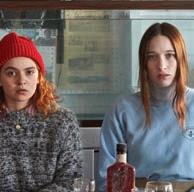
16 Comedy Lane Moore brings people together with a daily livestream.
18 Games Jackbox Games is sweeping the nation.
FILM
25 Preview Enjoy a mini streaming film festival, all from the comfort of your couch.
MUSIC & NIGHTLIFE
26 Feature Prolific musical polymath Nnamdï uses his new solo album to teach himself something about work-life balance.

29 Chicagoans of Note A new feature that introduces members of the Chicago music community in their own words
30 Record reviews A pandemic can’t stop the flow of great music. Our critics review releases that you can enjoy at home.
Gossip Wolf Damon Locks’s Black Monument Ensemble drop a live video to buoy a locked-down city, self-described “bohemian electronics” act Sip releases its first studio album, and more.
OPINION
36 Savage Love Dan Savage offers advice on Apple-polishing, trouble swallowing, and a so return to “normal.”
CLASSIFIEDS
PUBLISHER TRACY BAIM EDITORS IN CHIEF SUJAY KUMAR, KAREN HAWKINS CREATIVE LEAD RACHEL HAWLEY
MUSIC EDITOR PHILIP MONTORO
THEATER AND DANCE EDITOR KERRY REID CULTURE EDITOR BRIANNA WELLEN ASSOCIATE EDITOR JAMIE LUDWIG SENIOR WRITERS MAYA DUKMASOVA, LEOR GALIL, DEANNA ISAACS, BEN JORAVSKY, MIKE SULA
EDITORIAL ASSOCIATE S. NICOLE LANE GRAPHIC DESIGNER AMBER HUFF
LISTINGS COORDINATOR SALEM COLLO-JULIN CONTRIBUTORS ED BLAIR, NOAH BERLATSKY, LUCA CIMARUSTI, MARISSA DE LA CERDA, MARI COHEN, JOSH FLANDERS, SHERI FLANDERS, JACK HELBIG, IRENE HSAIO, CATALINA MARIA JOHNSON, MONICA KENDRICK, STEVE KRAKOW, NOËLLE D. LILLEY, JAMIE LUDWIG, MAX MALLER, ADAM MULLINS-KHATIB, J.R. NELSON, JEFF NICHOLS, MARISSA OBERLANDER, MATTHEW SIGUR, CATEY SULLIVAN
DIRECTOR OF DIGITAL JOHN DUNLEVY DEVELOPMENT ASSOCIATE COLETTE WILLARD SOCIAL MEDIA COORDINATOR JANAYA GREENE MEDIA PARTNERSHIPS COORDINATOR YAZMIN DOMINGUEZ
STAFF AND SPECIAL PROJECTS ASSISTANT TARYN ALLEN
SPECIAL EVENTS CONSULTANT KRISTEN KAZA
ADVERTISING 312-392-2970, ADS@CHICAGOREADER.COM CLASSIFIEDS: CLASSIFIED-ADS@CHICAGOREADER.COM
SALES DIRECTOR PATTI FLYNN VICE PRESIDENT OF SALES AMY MATHENY CLIENT RELATIONSHIP MANAGER TED PIEKARZ SENIOR ACCOUNT REPRESENTATIVES
LENI MANAA-HOPPENWORTH, LISA SOLOMON ACCOUNT REPRESENTATIVES
GREG MCFALL, NANCY SANCHEZ
CLASSIFIED SALES MANAGER WILL ROGERS
VMGADVERTISING.COM
JOE
2 CHICAGO READER - APRIL 16, 2020 ll
34 Early Warnings Rescheduled concerts and other updated listings 34
38 Jobs 38 Apartments & Spaces 38 Marketplace
NATIONAL ADVERTISING VOICE MEDIA GROUP 1-888-278-9866
LARKIN AND SUE BELAIR DISTRIBUTION CONCERNS distributionissues@chicagoreader.com 312-392-2970 CHICAGO READER L3C BOARD PRESIDENT DOROTHY R. LEAVELL TREASURER EILEEN RHODES SECRETARY JESSICA STITES AT-LARGE SLADJANA VUCKOVIC CONSULTANT CAROL E. BELL READER (ISSN 1096-6919) IS PUBLISHED WEEKLY BY CHICAGO READER L3C 2930 S. MICHIGAN, SUITE 102 CHICAGO, IL 60616 312-392-2934, CHICAGOREADER.COM COPYRIGHT © 2020 CHICAGO READER PERIODICAL POSTAGE PAID AT CHICAGO, IL ALL RIGHTS RESERVED. CHICAGO READER, READER, AND REVERSED R: REGISTERED TRADEMARKS ® THIS WEEK CHICAGO READER | APRIL 16, 2020 | VOLUME 49, NUMBER 28 TO CONTACT ANY READER EMPLOYEE, E-MAIL: (FIRST INITIAL)(LAST NAME) @CHICAGOREADER.COM IN THIS ISSUE We don’t have to prove our ‘American-ness’ On rejecting anti-Asian American rhetoric and standing up to hate Did John Prine die for Donald Trump’s sins? The cruelty, ignorance, and incompetence of the federal pandemic response have cost the life of a beloved singer-songwriter. The Reader’s stay-at-home chronicles Here’s what we’re reading, watching, listening to, etc., to pass the time. THIS WEEK ON CHICAGOREADER.COM ON THE COVER: PHOTO BY LLOYD DEGRANE. FOR MORE OF DEGRANE’S WORK, GO TO LLOYDDEGRANE.COM.
By ISA GIALLORENZO















Also known as the “fourth trimester,” the postpartum period is an incredibly challenging time for people who give birth.















Up until recently, that challenge included finding appropriate underwear. With that neglected need in mind, friends and 30-something new mothers Aubrey Howard, Eden Laurin, and Mia Clarke set out to create FourthWear Underwear, an undergarment with an opening for an ice or heat pack to address often “unmentionable” issues that a ect postpartum bodies (and souls). “We felt compelled to start this business

due to the separate and distinct traumas that the three of us faced throughout the process of childbirth and postpartum,” Howard says.


They launched FourthWear Underwear last fall as the flagship product of Nyssa, their new brand. The name reflects their thoughtful approach to the business: Nyssa means “new beginnings” in Greek and is derived from the word “woman” in Arabic. “We wanted an ownable name that sounded friendly and approachable while being deeply tied to our brand purpose,” says Clarke. While the brand


APRIL 16, 2020 - CHICAGO READER 3 CITY LIFE
shop local Speaking of unmentionablesThree friends have created a patented postpartum undergarment that can hold an ice pack.
FOURTHWEAR UNDERWEAR BY NYSSA nyssacare.com TAWATHA CONLEY IMPORTS & DOMESTICS ‘19 Toyota Corolla Hatchback XSE/Navi. ......Loaded, 11K, Silver 22343R ..$17,995 ‘16 Toyota Corolla S Prem. ............Automatic, Full Power, 34K, Silver P6381 ..$13,995 ‘13 Hyundai Sante Fe 2.0T AWD ........................ Automatic, Black, 23734A ..$11,995 ‘11 Honda CRV EX AWD............................Automatic, Sunroof, Silver, 24311A ....$9,995 ‘14 Toyota Prius Two ............................Automatic, Full Power, Silver, 23783A ....$8,995 ‘11 Honda Accord LX ..............................Automatic, Full Power, 67K, 24134A ....$8,995 ‘09 Mini Cooper S ................Automatic, Full Power, 58K, Dark Silver, 24393A ....$7,995 ‘11 Hyundai Elantra Ltd. .................. Automatic, Loaded, 51K Black 23930B ....$7,995 ‘09 Honda Fit Sport ..............................Automatic, Hatchback, Black, 23892A ....$7,995 ‘08 Lincoln MKX AWD ..........................Auto., 1-Owner, Leather, Blue, 24360A ....$6,995 ‘13 Kia Soul+ ..........................................Automatic, Full Power, Moss, 24176A ....$6,995 ‘12 Fiat 500 Pop ....................................Automatic, Full Power, Black, 21534A ....$5,995 SUBARU FORESTERS ‘18 Forester Prem. ......Automatic, Sunroof, Heated Seats, White, 24152A ..$20,995 ‘17 Forester Prem. ..........Automatic Sunroof, Heated Seats, Blue 24344A ..$19,995 ‘16 Forester Touring ..............Automatic Sunroof, Leather, Silver, 23651A ..$18,995 ‘14 Forester Prem. ......Automatic, Sunroof, Heated Seats, White, 24116A ..$14,995 SUBARU OUTBACKS / CROSSTREK / ASCENT ‘19 Ascent ................................ 8 Passenger, Sunroof, Eyesight, 4K, Grey, P6528 ..$26,995 ‘17 Outback Prem. ..............................Auto., Eyesight, Alloys, Black, 23697A ..$20,995 ‘17 Crosstrek Ltd. .......................... Automatic, Leather, Sunroof, Khaki, P6522A ..$19,995 ‘18 Outback 2.5i Automatic, Full Power, Eyesight, White, P6493 ..$19,995 ‘16 Outback Prem. ..................Automatic, All Weather, Alloys, Black, 24117A ..$18,995 ‘14 Outback Prem. Auto., Full Power, Alloys, Silver, P4891 ..$13,995 ‘12 Outback 2.5i ..................................Automatic, Full Power, Black, 23880A ....$8,995 EvanstonSubaru.com 3340 OAKTON - SKOKIE • 847-869-5700 A+ RATED NO SECURITY DEPOSIT! $2,995 due at signing. LFB-02 #0361 AUTOMATIC, Roof Rails, Alloys EyeSight, All-Wheel-Drive $95 1 0% TOP-QUALITY INSPECTED USED CARS & SUV’ S NO SECURITY DEPOSIT! $2,995 due at signing. LDB-01 #0292 AUTOMATIC, Back-up Camera EyeSight, All-Wheel-Drive *19$8 36 MONTH LEASE * 36 MONTH LEASE * 36 MONTH LEASE 0% NO SECURITY DEPOSIT! $2,995 due at signing. LRA #73012 All-Wheel-Drive, 17’’ Alloy Wheels, Apple Carplay / Android Auto $74 1 0.9% *Add tax, title license and $300 doc fee. 0% financing for 63 months. Monthly payment of $15.87 per $1,000 borrowed. Finance on approved credit score Subject to vehicle insurance and availability. *Lease on approved credit score. Lease, 10k miles per year, 15 cents after. Lessee responsi-ble for excess wear and early termination of lease. End of lease purchase option; Outback $17,806. Crosstrek $13,198, Forster $16,495. Ends 4/30/2020 When A Great Deal Matters, Shop Rob Paddor’s... NEW DESIGN NEW DESIGN Voted “Best Auto DeAlership ” By CHICAGO Voters’ Poll 2019 Evanston Subaru in Skokie NEW 2020 SUBARU FORESTER NEW 2020 SUBARU CROSSTREK NEW 2020 SUBARU OUTBACK 0 0 0 0 FORESTER OUTBACKASCENT IMPREZA 0% FOR 63 MONTHS FOR A LIMITED TIME 9:00AM-6:00PMNEW REDUCED HOURS MONDAY-SATURDAY •SALES •SERVICE •PARTS We are vigilant in upholding the practices as recommended by the CDC SALES BY APPOINTMENT ONLY EMAIL: EPADDOR@EVNSI.COM OR CALL: 847-869-5700
FOOD & DRINK
name is a nod specifically to women, “FourthWear Underwear is intended for anyone who has given birth,” she says. “We know that plenty of people who give birth don’t identity as women or mothers, and we do our best to recognize that by being purposeful about the language we use and the people we profile on our social media and podcast (such as transgender parent Trystan Angel Reese). Being inclusive of LGBTQ+ people is extremely important to us, too. So is being inclusive towards people of all sizes and races.”
To create FourthWear Underwear—which has both a design and utility patent—the three friends consulted with new mothers, ob-gyns, and doulas. They also drew from their own experiences: “The thing about the healing postpartum body is that most garments, including underwear, are incredibly uncomfortable to wear. The allure of the flimsy mesh hospital underwear is that it doesn’t provide any points of irritation on the skin, but that also means that it barely holds a maternity pad, and definitely not an ice pack,” explains Howard.
“Between us, we had a mix of vaginal and caesarean births at varying levels of recovery time, so we experienced a wide spectrum of needs that are commonly shared between those who have experienced birth. Almost everyone bleeds for days, weeks, even months after giving birth—that is why we chose fabric that is also leak resistant, and widened the gusset so it could better accommodate oversize pads. If you had a C-section, you will have pain at the incision site, which can be greatly soothed through the application of heat and ice. It is a little known fact that over 90 percent of first-time mothers who give birth vaginally will experience tearing, which can range from minor (first degree) to debilitating (fourth degree). Ice is an essential support to help with pain relief,” says Clarke. “We also wanted to address an emotional need,” she adds. “After being in a hospital (for those who don’t give birth at home), it can feel pretty demoralizing to continue to wear the very clinical-looking hospital mesh underwear. It makes you feel as though you are still a patient. We wanted our underwear to help women start to feel like ‘themselves’ again after going through a very intense physical and emotional experience.”
Though there are currently many other options of postpartum underwear available, none feature an opening for an ice or heat pack. Besides that, thorough consideration was given to fit and fabric; FourthWear Underwear
fully covers the buttocks and has an adaptable waistline that can be lowered or raised according to the wearer’s preference. It is made with post-consumer recycled plastic, a surprisingly suitable choice: “Our fabric (and product) needed to accomplish four very important things: stretch (and recover) enough to accommodate a postpartum body, be incredibly soft and silky to the touch, have as little environmental impact as possible, and be able to securely hold an ice/heat press against the skin. We tried everything: bamboo blends, Lyocell, organic cotton, charcoal-coated fabrics, even wool! Though polyester gets a bad rap as people associate it with uncomfortable and rigid garments, the actual feel is akin to a luxury athleisure product. To top it o , recycled polyester is actually one of the most environmentally sustainable fabrics,” Howard says. The undergarment is machine washable, costs $32—the three-pack sells for $85—and comes in gray and navy blue. More items are expected to be added to the line this summer to cater to customers beyond the fourth trimester.
Nyssa goes beyond just commerce for the three entrepreneurs: their production follows ethical and community-driven values that can be seen in many aspects of their company. Their garments are made in Chicago and will soon be produced at a local women-owned and -operated manufacturer; returned underwear are triple-washed and donated to a women’s shelter; their “Women Werk” program is an e ort to employ women who are officially in retirement. “When we started Nyssa, we had two goals in mind: create a company that provides incredibly e ective, empathetically designed products that support people during times of transformation, starting with the fourth trimester.
The other was to create the community we wish we’d had while we were pregnant and postpartum,” Clarke says. In her opinion, one of the highlights of their podcast, aptly called The Unmentionables , is an interview with Brown University economist Emily Oster.
“Her data-driven approach to parenting really helps mitigate some of the anxieties firsttime parents have,” she says. One of those anxieties used to be hoarding mesh undies distributed at maternity hospitals. Fortunately that won’t be necessary anymore. v FourthWear Underwear can be purchased at Moon Voyage in Wicker Park and at nyssacare.com.
FOOD FEATURE
Grill your way through the pandemic
Leela Punyaratabandhu’s new cookbook Flavors of the Southeast Asian Grill is a remedy for isolation
By MIKE SULA
One of the very few things I’ve been looking forward to this spring that hasn’t been ruined by COVID-19 is the third cookbook by Leela Punyaratabandhu, Flavors of the Southeast Asian Grill: Classic Recipes for Seafood and Meats Cooked Over Charcoal
For more than a decade I’ve relied on her advice and expertise anytime I wrote anything about Thai food. Beginning with the graceful, witty, and frequently elegiac words on her blog shesimmers.com and in subsequent books Simple Thai Food and Bangkok, she established herself as the English language’s foremost authority on Thai food. But her well is much deeper than that. Born and raised in Bangkok, she’s traveled throughout Southeast Asia since she was child, enjoying a thorough exposure to food throughout the region. “Every time I go back to Thailand, I always include short trips to surrounding countries and beyond,” she told me.
If you’ve followed her Instagram account over the last few years, you’ve seen tantalizing sneak peeks at live-fire foods from Burma, Indonesia, Vietnam, Malaysia, Laos, and Cambodia. I’ve been having a great time this spring with a number of recipes from the new cookbook, smoking satay of baby back ribs with peanut sauce, grilling pork and crabmeat crepinettes with pineapple-chile dipping sauce, and I’ve applied her method of lacto-fermenting pork to preserve all sorts of meats and imbue them with the tantalizing, tangy power of sour.
The book continues a long-running theme in her work: here in the U.S. you can very often cook versions of traditional Southeast Asian recipes in your home kitchen better than those you can order in restaurants— even with limited access to traditional
ingredients or equipment. You don’t need coconut husks to smoke fish Quezon City-style. You don’t need an ong to make Thai-style clay jar chicken. And you don’t need salted soybean paste to make Teochew roasted duck, a recipe she shared with the Reader. (Pro tip: if things get really bad during the pandemic, ducks are plentiful in public parks this spring).*
All you need is some fuel and even the most rudimentary of grilling equipment.
Leela answered my questions about the universality of barbecue and its place in the time of COVID-19 from her halftime home in the western suburbs, where she quarantined herself in early March after flying home from Italy on a plane full of people evacuating the epicenter of the country’s outbreak. (She’s OK.) “The responsible thing to do will be to isolate myself from society,” she told me. “Very easy for this homebody to do, actually.”
Mike Sula: Anyone who follows you on Instagram knows you are a prodigious home cook. Are you cooking more prodigiously in the time of COVID-19? What, if anything, are you doing di erently?
Leela Punyaratabandhu: COVID-19 has made most home cooks more creative. I don’t mean experimenting with unusual flavor pairings or esoteric ingredients, but thinking outside the box—cooking by the seat of your pants. With the situation being what it is and with the weather in Chicago still being as cold as it is, you can’t rely on fresh ingredients from the store or your home garden. This is the time when we start our day staring at what’s left in our freezer and pantry and hope that an idea for a good dish will emerge. It’s like playing Iron Chef with yourself at home. It’s kind of fun.
For example, just a week or so ago, the
4 CHICAGO READER - APRIL 16, 2020 ll
CITY LIFE
continued from 3
Honey-roasted duck with pickled ginger and chilesoy-vinegar sauce

yard—setting up a tent outside and cooking food in the fire pit, perhaps? Create a game of cooking exclusively outdoors for maybe a week—over charcoal or wood—to see what it’s like. Cooking over live fire outdoors teaches us about how to build a fire, how to manage it, and how to control the heat as we cook. It sharpens our instinct and, I think, makes us better cooks indoors or outdoors.
How much preservational function exists for smoking and fermenting in Southeast Asia? Was the original rationale for fermenting Isan sausage (sai krok isan) preservational? What about naem (soured pork)? Was souring meat supposed to preserve it, or did people just like the taste? What about the Filipino smoked fish on page 42?
smoked fish tinapa.
In the case of naem and sai krok isan, souring is first and foremost to preserve the meat. Then people discovered that the deeply savory tang you get out of the lacto-fermentation tasted good, and so they continued to ferment the meat in this way.
only fresh produce I had left was literally one kabocha squash. My next scheduled grocery delivery was a couple days away, and I had nothing else other than the squash and some seasonings and dried goods in the pantry. I cut half into 1-inch cubes, leaving the rind on for texture; I stir-fried them with fish sauce, oyster sauce, garlic powder (no fresh garlic that day), and lots of ground black pepper and served that with rice. I peeled the other half, cut it into 1-inch cubes again, and cooked the squash in coconut milk just until soft but firm. The coconut milk was then sweetened with palm sugar and seasoned with a dash of salt. It’s a classic Thai dessert. I lived on these two things for two days in a row. On the third day, the squash in sweet coconut milk had become too soft, so I ran it through a sieve into something that looked like baby food and incorporated that into a pancake mix that came in that day with my grocery delivery. Kabocha-squashovercooked-in-coconut-milk-and-palm-sugar pancakes are pretty darned delicious.
The book does really underscore how universal and elemental cooking over coals is. Anyone can do it with a wide range of food, fuel, and equipment. But does this open, communal form of cooking have a place right now? Is there some way it could be useful or helpful for people, if only psychologically? Can you make a case for grilling outdoors, over coals, during a pandemic?
In Southeast Asia, grilling is not regarded as a
seasonal activity but part of everyday life—all year round. You won’t see food magazines publish their grilling issues during the summer months or hear conversations about how they need to dust o their grills and smokers and get ready for the grilling season when the weather gets warmer. A charcoal grill is regarded in much the same way as an indoor kitchen gas/electric range; it’s a cooking tool that just happens to be located outdoors out of necessity. So, with or without a pandemic in the picture, as long as people cook, people grill.
In the U.S., on the other hand, live-fire cooking outdoors has a celebratory aspect to it. When we think of grilling or barbecue, we think of a season—the arrival of warm weather and outdoor living, newsstands flooded with food magazines with grilling recipes on the covers, large gatherings of people you love, Fourth of July picnics, Memorial Day weekend, backyard cookouts with friends and family, tailgate parties, barbecue festivals, etc. The pandemic has already disrupted the rhythms of our lives and, in severe cases, turned our world upside down, and the thought of it continuing into the spring and summer doesn’t exactly put us in a party mood.
Not to sound glib, but even in the midst of COVID-19 when we’re hunkered down at home, instead of bemoaning this time, we can embrace it, knowing that we’re staying home to save lives. We can still make something fun out of it. Grilling as a family is already fun, but maybe if you have small children, you can turn it into an adventure in your own back-

In the hot and humid climate of Southeast Asia, food preservation is essential for long-term storage—whether it be through lacto-fermentation, as is the case with soured meats like sai krok isan or naem, or curing and hot smoking as is the case with the Filipino
Preservation of food exists independently of the barbecue culture. Sometimes these preserved foods are cooked on the grill or smoker—like tinapa; sometimes, they’re not. It all depends. For example, naem in its simplest, most traditional form—similar to pressed ham—doesn’t even need to be cooked at all, let alone grilled, before serving. If not for the fear of harmful pathogens and parasites, there would be a lot of people who prefer to eat their naem raw. And if you want to cook it, you can cook it many di erent ways, including steaming and stir-frying. It’s not accurate to think of naem as being made for barbecue since grilling or smoking is just one of the ways to cook it.
*Don’t do that. That would be illegal v
@MikeSula
APRIL 16, 2020 - CHICAGO READER 5 FOOD & DRINK
COURTESY
PENGUIN RANDOM HOUSE
POLITICS
Hey, Joe
Some advice for Biden as he tries to court the Berniecrats
BY BEN JORAVSKY
Far be it from me to give advice to Joe Biden, a candidate I never supported during the primaries and still sort of wish would get o the ticket.
On top of everything else, Tara Reade’s sexual assault accusation against him isn’t going away.
But as one of the foremost authorities on lefties—with a subspecialty in the breed often known as Berniecrats—I’d like to give him some advice for the sake of party unity and defeating Trump, which is at the top of my list of political priorities.
Winning over Berniecrats has been on the to-do list of Dems since Bernie Sanders dropped out last week. Democrats think they can do that by saying nice things about Bernie.
It’s funny to watch everyone from Biden to writers for the New York Times fall over themselves to say nice things about Bernie—even though they never had anything nice to say about him while he was still in the race.
Apparently they’ve decided that if they butter up Bernie, they can win over Bernie voters.
Well, it sort of worked—at least, they got Bernie to endorse Biden.
But winning over Bernie’s voters? That’s going to be tougher.
To help you out, Dems, I’m o ering this brief primer on Berniecrats. Pay attention because
I know le ies who voted for Nixon in ’68 because they were so incensed with Dems over the war.
it’s all gonna be on the test . . .
Berniecrats fall into three basic categories, at least when it comes to voting for Dems.
There are the Berniecrats who will hold their noses and vote Democrat—especially over Trump—no matter what state they live in. Even if, like Illinois, their state is guaranteed to go blue.
For better or worse, I’m in that category.
Then there are the Berniecrats who will hold their noses and vote Democrat—but only if they live in a swing state, like Michigan, where their vote really counts in winning the electoral college.
Biden could win more of these voters if he backed off some of his centrist policies—like his aversion to Medicare for All (all he has to do is say the pandemic has forced him to see the world in a new light).
He might even win over some Libertarian-like swing voters by getting over his bizarre aversion to cannabis legalization and supporting it. (You watch—if Trump feels his campaign needs a jolt, he’ll come out in favor of legalization, while Joe’s still talking about more studies being needed.)
Finally, there are the Berniecrats who will never, ever, ever vote for Biden—or any Dem— no matter what state they live in.
These are hard-core lefties. Many of them could barely bring themselves to vote for Bernie because he wasn’t leftist enough.
I know the type very well—you might say I’ve spent more than a few Thanksgivings with some of them for most of my life.
They think Dems aren’t much better than Republicans, and that when push comes to shove, Dems will sell them out every time.
You can talk to them until you’re blue in the face about judicial appointees and the Supreme Court and they’ll remind you that Nancy Pelosi and the Dems gave Trump everything he wanted on the military budget.
Oh, man, do I know this type . . .
They’re descendants of the people who voted for Henry Wallace over Harry Truman back in 1948.
They couldn’t bring themselves to vote for Adlai Stevenson or John F. Kennedy.
They voted for LBJ over Goldwater in 1964, and then felt betrayed by the Vietnam War. So in 1968, they voted third party over Hubert Humphrey—LBJ’s vice president. Or, gasp, they voted for Nixon.

Yes, it’s true. I know lefties who voted for Nixon in 1968 because they hated Humphrey and Johnson so much for that war.
For that matter, they’re some of the same people who voted for Ralph Nader over Al Gore in 2000. And while I’m on that subject . . .
Hey, Dems, stop whining about 2000.
It’s not Ralph Nader’s fault that Al Gore “lost” to George W. Bush. Gore ran a lackluster campaign. He picked a lousy running mate (Joe Lieberman). And then when the fight over Florida really heated up, Gore wimped out. He told Jesse Jackson and union activists not to go to Florida to protest the recount, pretty much conceding the fight to Republicans and proving once again that Republicans play the game of politics to win, and Dems play to make the contacts they need to get a good job on Wall Street.
Sorry for that outburst—it’s just the hardcore leftie in me.
Where was I? Oh, yes, advice to Biden.
I suggest Dems worry less about hard-core lefties and more about getting more Black voters to the polls.
I realize this might be tough for some Dems, as many of them hold on to power precisely because Black people don’t vote—what up, Mayor Rahm?
Just imagine how Chicago would be run if all—or even most—of eligible Black residents actually voted.
For one thing, we wouldn’t dedicate $1.3 billion in property taxes to Lincoln Yards, then cry that we’re too broke to pay for nurses in our public schools.
Remember when the teachers had to go on strike before the mayor agreed to budget more nurses for our public schools? Seems like ancient history, doesn’t it?
At the moment, we’re celebrating the brave nurses who are sacrificing their lives and safety to treat COVID-19 patients. And just a few months ago it was like—nurses? Who needs nurses?
And you wonder why hard-core Berniecrats have a hard time voting Democrat.
Anyway, that’s my advice, Biden. Along with this: fight like hell to save the post o ce and bymail voting, no matter how many Republicans say they’ll oppose it.
One thing you ought to know about Republicans: when we go high—as Michelle Obama once advised—they punch us in our exposed bellies.
This isn’t going to be easy, even if the Berniecrats fall in line. v
@joravben
6 CHICAGO READER - APRIL 16, 2020 ll NEWS & POLITICS
DEPARTMENT OF
DEFENSE
Viral theories
Bulletin of the Atomic Scientists examines the possibility that COVID-19 resulted from a lab accident.
By DEANNA ISAACS
Among many unfortunate truths about the pandemic currently ravaging us is this one: we don’t know jack about it.
We don’t know how to prevent or cure it, we don’t know whether it can infect us more than once, and we don’t know how it suddenly developed—rising like a bat out of hell and making its way into our lungs.
We know something about bat poop, however. Some of these alarming night creatures—all teeth and claws, riding on devil wings and flapping up out of nowhere—have feces that harbor a similar coronavirus. They’ve been identified as the original source of the 2003 SARS epidemic and, we’re told, they probably incubated this new COVID-19 plague, too.
Unless, you know, it came from a lab. Out of our ignorance, and our politics, theories have emerged.
COVID-19 cases first showed up in Wuhan, China, mostly among people exposed to a live
animal and seafood market there. When Donald Trump used the presidential podium to brand it “the Chinese virus,’’ he fed into fears already stoked by right-wing conspiracy theorists suggesting that the virus was a laboratory-created weapon of biological warfare.
These conspiracy theories were quickly dismissed by mainstream experts. It was inconceivable that China would purposely unleash such a catastrophe on its own people. And scientists examining the structure of the virus were increasingly convinced that it was a naturally occurring phenomenon. The dominant theory was that it had gone from bats to some intermediate animal, and then to humans. (You might remember that China initially said it had no evidence of human-to-human transmission.) First snakes, and then the scaly pangolin—a winsome, endangered anteater, valued in China as meat and medicine—were fingered as likely candidates. The idea that the virus might
have come from a laboratory was pushed o to the loony fringes along with the suggestion of intentional biological attack.
So it was surprising, on March 30, to find the estimable Bulletin of the Atomic Scientists reviving the theory of a lab as the possible original source. Not as a lab creation, and not as a biological weapon, but as an accidental leak of a substance that was being studied. The story was reported by associate editor Matt Field, a native Chicagoan who covers disruptive technology for the Bulletin.
Field says he wrote the story because it’s important to know how the pandemic started, and because there’s disagreement among scientists about whether an accident at a lab could have launched it. The authors of a piece published in Nature Medicine last month (led by scientists at the Scripps Research Institute), for example, presented a strong case against COVID-19 as a lab creation, and also said they “do not believe that any type of laboratory-based scenario is plausible,” Field told me. But, he says, others disagree with the latter conclusion. One of the most outspoken is Professor Richard Ebright of Rutgers University’s Waksman Institute of Microbiology. “Ebright thinks that it is possible that the COVID-19 pandemic started as an accidental release from a laboratory such as one of the two in Wuhan that are known to have been studying bat coronaviruses,” Field wrote in a read-it-again sentence in his Bulletin piece.

Field also mentioned an article by Yanzhong Huang, a senior fellow for Global Health at the Council on Foreign Relations, who in his own reporting cited a paper by a researcher at South China University of Technology that “concluded that the coronavirus ‘probably’ originated at the Wuhan Center for Disease Control and Prevention,” which is only about 280 meters from the seafood market. That paper subsequently disappeared from ResearchGate, an
international sharing site for scientists, but can still be found on the Internet.
The Bulletin, a nonprofit now housed at the University of Chicago, was founded here in 1945, in response to an incidence of devastatingly disruptive technology: the atomic bombings of Hiroshima and Nagasaki. Its goals were to educate the public about nuclear weapons, to make activists of scientists, and to manage the “Pandora’s box of modern science,” Bulletin president Rachel Bronson says. Over the years, issues like climate change and pandemics have joined the threat of nuclear war as concerns: “Whenever there’s a science-based issue that has the potential to bring great benefit or great harm and there’s a need for political action, we’re interested.”
There’s a risk in writing this kind of piece, Bronson says. “It did get picked up by some right-wing blogs, and we did take some criticism for it. We’re really proud of it, notwithstanding that criticism.” She says it’s important, “in this very polarized environment, that credible places like the Bulletin not shy away from stories,” regardless of who might pick them up. “We’re just trying to keep the pressure on understanding how this virus originated so that we can prevent it from happening again.”
“It’s not like lab accidents never happen,” Field observes: “It’s an issue with laboratories across the world, including the United States.” Ebright, via e-mail, notes that U.S. laboratories alone report more than 200 incidents in which substances with biological weaponry potential are lost or released each year.
“Lab accidents are common,” Ebright says. And, except for smallpox virus, “there is no international oversight of work with pathogens.” v
@DeannaIsaacs
APRIL 16, 2020 - CHICAGO READER 7 NEWS & POLITICSMatt Field COURTESY BULLETIN OF THE ATOMIC SCIENTISTS COVID-19
Play at home on our app or online at IllinoisLottery.com WIN THE JACKPOT FROM THE COUCH
‘I’m not overreacting’
A man who
By MARI COHEN
Roosevelt Myles, an inmate at Illinois River Correctional Center who has been waiting 20 years for a wrongful conviction hearing that was granted by the appellate court in 2000, has now earned enough “good time” sentencing credit to leave prison in August. Under di erent circumstances, for a man who has already spent 27 years behind bars for a murder he says he did not commit, waiting just a few more months to get to live with his fiancée and begin a career as a paralegal might have been tolerable.
But now, with COVID-19 already causing major outbreaks in other correctional facilities in the state, any extra time spent in prison could be a major health risk for Myles, and his attorneys are petitioning the governor to grant him an immediate release. In a letter submitted to Governor J.B. Pritzker and the state’s Prisoner Review Board on April 3, Myles’s pro bono lawyers, Jennifer Bonjean and Ashley Cohen, wrote, “it is your obligation as Governor to protect the citizens of the State of Illinois, get ahead of the inevitable COVID19 spread, and assist in saving this innocent man’s life before it is too late.”
As soon as the novel coronavirus pandemic started to upend life across the country, advocates began to raise the alarm that prisons and jails—given the crowded conditions,
aging inmate populations, and often inferior health care—could easily become petri dishes for the infection if significant precautions were not taken, including releasing as many inmates as possible. Now, in Illinois, worstcase scenarios have already become reality: Cook County Jail is the site of the nation’s largest outbreak, with over 300 positive cases and three deaths among detainees so far. The state prison system has reported 146 cases among inmates, most of them at Stateville Correctional Center, near Joliet, where 124 incarcerated people have tested positive for the virus and two have died.
While the Illinois Department of Corrections (IDOC) insists that it is taking all possible measures to protect inmates and sta , some incarcerated people have reported having limited access to hand sanitizer and other items they need. Illinois River, where Myles is, about 30 miles west of Peoria, has yet to see any cases, but inmates and advocates are still concerned that the virus could make its way inside. Myles and his fellow inmates are currently on a precautionary quarantine lockdown, with limited access to phones, work canceled, and all outside visits suspended.
Myles, who is 55, is particularly worried about how the virus would affect him if he gets it, given that he has diabetes and high
blood pressure and has already had pneumonia twice in his life. “I’ve been looking at the news. It’s bad out there,” Myles wrote me via the prison’s e-mail service at the end of March. “I’m not overreacting—if I’m infected with COVID-19, there’s a strong chance that it may become fatal to me.” When he was fi rst placed in lockdown, reading news about the virus with no way to check on his family and friends, he became so worried that he ended up with an ulcer.
In the fall, I wrote about Myles’s long struggle to have his wrongful conviction overturned and his efforts to maintain his relationship with his fiancée of eight years, Tonya Crowder, even as he remains incarcerated. In 1996 Myles was convicted of the 1992 murder of 16-year-old Shaharian Brandon and sentenced to 60 years in prison. His conviction was based primarily on the testimony of one witness, a teenager at the time, who changed her story multiple times before trial. She now says that she was coerced into implicating Myles by a police detective who has been accused of misconduct in numerous cases.

In 2000 the Illinois Appellate Court ruled that Myles deserved a new hearing on his conviction because his trial lawyer did not call three witnesses who could have provided an alibi. Myles was then assigned a lawyer to file another post-conviction petition, but his public defender was negligent, and his case languished for years in an astonishing delay. The judge assigned to the case, Dennis J. Porter, did not push Myles’s lawyer to move the case forward. Myles is now represented by civil rights lawyer Bonjean, but early last year, Judge Porter denied Bonjean’s petition for Myles and refused to hold a hearing. Bonjean immediately appealed; currently the case is pending before the Illinois Appellate Court.
Like other inmates sentenced before 1998, Myles has been allowed to have one day taken off his sentence for every day served with good behavior. In January, a new law went into e ect that granted additional sentencing credit to eligible inmates based on participation in certain programs. After a lot of effort navigating the IDOC bureaucracy, Myles learned last week that he had been approved for 15 months of additional time o his sentence because of his experience in correctional industry work programs and his paralegal certification. Those 15 months put his release date in August. He’s also hoping
to receive three or four months of credit that can be granted at the discretion of the director of IDOC (currently Rob Jeffreys), which could help him get released as soon as May. (Bonjean’s letter to the governor, however, warns that the pandemic could delay the processing of his request for additional credit.) Meanwhile, Governor Pritzker has signed an executive order allowing the IDOC director to release certain vulnerable inmates on medical furloughs. So far, Pritzker has also used his clemency power to release 17 individuals since March 11, according to the Tribune Bonjean says that they are trying any and all avenues to get Myles released as soon as possible, including additional sentence credit from Je reys, the medical furlough program, and clemency from the governor. “Whether Mr. Myles is released next month or in several months, the remainder of his sentence should be commuted in light of his enhanced risk for COVID complications should he become infected,” his petition reads. Bonjean and Cohen cite his compelling innocence claim, his underlying health conditions, and his record as a model citizen as reasons the governor should move to grant his request. But the process takes time.
“They need certain documentation, and getting documentation from your clients who have no access because they’re all on lockdown is di cult,” says Bonjean. “I know there are people who are working hard on their end to process these petitions, but it’s slow going.”
The Prisoner Review Board—which is tasked with making recommendations to the governor regarding clemency—and the governor’s o ce did not respond to requests for comment on Myles’s petition. The Cook County State’s Attorney’s Office, which will have an opportunity to weigh in on Myles’s release, said in an e-mailed statement that it is “urgently and thoroughly reviewing matters on a case-by-case basis, including cases presented for emergency bond hearings as well as petitions for clemency during this unprecedented crisis.”
Meanwhile, Myles and Crowder are taking advantage of the opportunity to talk over video chat when they can—Illinois inmates are now receiving one free video visit a week in light of in-person visit suspensions. Crowder was in good spirits when she called me last week from Peoria, where she’s quarantining with her son and daughter. She hopes that Myles will be able to join them soon. v
8 CHICAGO READER - APRIL 16, 2020 ll
@maricohen95 NEWS & POLITICS
Roosevelt Myles and Tonya Crowder TONYA CROWDER
NEWS
has waited 20 years for a court-ordered hearing is trying to secure release from prison before the virus hits.
MINERAL
Why did you start MINERAL?
Mills Miller, CEO : While traveling through South America in the summer of 2016, I contracted an amoeba parasite while climbing Mt. Pisco in Peru (19k ft). The parasite attacked my lower intestine, causing it to swell and wrap around my colon. Doctors in Peru and in Dallas, Texas, upon my emergency evacuation, were adamant that they remove my colon as the pressure from my large intestine would likely cause my colon to pop.
I refused and instead used a variety of plant medicines to kill the parasite and cannabis oil to reduce the inflammation in my large intestine.
After a full recovery I began to study the cannabis
plant, eventually becoming an amateur botanist, self-proclaimed. I created a thesis or a hypothesis for why cannabis oil products exist and I used those notions to create a foundation for MINERAL.
What sets MINERAL apart from others?
MINERAL formulates with the whole plant. This phrase, “whole plant” is beginning to trend around the industry but the way its being used is a bit misleading. A MINERAL formulation utilizes fats, vitamins, lipids, and amino acids from the cannabis plant to create an efficacious product.

By including these components the body’s ability to absorb and activate the cannabinoids and terpenes for medicinal
purposes is fully realized.
Tell me about your best-selling Balance formulation.
We formulated BALANCE as the personification of experiencing the whole plant. BALANCE is a calming, mood improving solution for overworked, anxious and stressed body and minds. Quite appropriate given the current climate.
The philosophy of MINERAL is…..
CBD, on its own, is largely ineffective. MINERAL formulates with the wholeplant, including fats, vitamins, lipids, and amino acids that are essential for the body to receive benefit from cannabis formulations.

APRIL 16, 2020 - CHICAGO READER 9
When Illinois cannabis went recreational on January 1st, many in the industry became eager to enter our market. One company stands apart from the crowd with their exceptional products, thoughtful packaging, design, and profile. THIS IS
A whole-plant hemp oil brand that sustainably grows and formulates high-quality hemp oil solutions for peace of mind and body. This is Mineral. You Deserve to Feel Good. www.mineralhealth.co PAID ADVERTISEMENT
Homeless during a pandemic
Chicagoans without shelter face the tough choice between the streets and shared air.
By MAYA DUKMASOVA
As local, state, and federal authorities step up their COVID-19 response, one of the most pressing issues is managing Chicago’s existing (and sure-to-be-growing) homelessness crisis. An estimated 86,000 people are homeless in the city, according to the Chicago Coalition for the Homeless. Tens of thousands live “doubled up” with relatives or friends, and between 5,000 and 6,000 people are on the street or in “congregant” emergency shelters such as the Pacific Garden Mission or Franciscan Outreach shelters.
So far, there’ve been no confirmed cases or deaths from the novel coronavirus among Chicago’s homeless population. In a statement to the Reader the city said its Department of Public Health epidemiologists “investigate and track all reported cases of COVID-19 within all congregate settings in the city, including homeless shelters.” Nevertheless, with tests in short supply and a grave lack of access to health care among this population, public health experts and housing advocates are bracing for the worst.
The city has launched a variety of initiatives to help homeless people stay safe and access shelter during the pandemic. Porta-potties and handwashing stations have been installed at several encampments. Some 700 new shelter beds were created at area YMCAs to help existing emergency shelters implement social distancing protocols, like moving beds six feet apart. Two thousand $1,000 emergency housing assistance grants were created (for which the city received 83,000 applications in six days) and more are in the pipeline with fundraising help from the Family Independence Initiative.
The hundreds of local hotel rooms designated as isolation housing, however, are not currently available to homeless people trying to get o the streets. Instead, they’re reserved for health-care workers and “individuals who
either have a COVID-19 diagnosis or who are awaiting test results, but who cannot safely return home and do not need hospital care,” according to the mayor’s o ce.
And so the most direct way to get a roof over one’s head remains through an existing emergency shelter. To get into a shelter, people have to call 311, or go to a police station, hospital, or city drop-in center for a referral to a location that can accommodate them. CDPH has issued a set of guidelines and a questionnaire for shelters to screen every incoming person for COVID-19 symptoms.
While some smaller shelters have stopped taking new clients to help protect those already in their care, others, such as Franciscan Outreach (the largest city-funded emergency shelter), have continued to receive new guests. Currently, Franciscan is serving 400 people across its three shelter facilities and at one of the new YMCA locations brokered by the city.
“We have protocols in place for disinfecting all of our sites,” said Laura Reilly, Franciscan’s director of development and marketing. “Our sta is also screening for symptoms of coronavirus.” Reilly said that donations of personal hygiene and cleaning supplies are needed now more than ever but that the organization is managing to supply all guests and sta with masks. She added that teams of medical workers from Rush University Medical Center and other health-care providers conduct symptom surveys and temperature checks for every person staying at their facilities multiple times a day. “We don’t have tests, so if people are exhibiting signs and symptoms then they’re transported to a designated hotel to isolate,” Reilly explained. “And if people are seriously ill they’ll be transferred to a hospital instead of a hotel.” So far two people who’d been staying at Franciscan shelters have been transferred to the isolation hotel rooms.
Despite attempts to increase social dis-
tancing and ramped-up medical screening at shelters, many homeless advocates argue that traditional “congregant” shelters, even with beds spaced farther apart, are not safe during a pandemic. “It hasn’t happened yet that tons of people in shelters are getting sick, but it’s going to happen,” says Julie Dworkin, policy director of the Chicago Coalition for the Homeless. “Shelters really don’t have the ability to follow the ideal CDC guidance, which is isolated rooms.”
The Chicago Housing Initiative, Illinois Public Health Association, and more than 1,300 online petition signatories have called on the Chicago Housing Authority to make some 2,000 units of vacant public housing available for the homeless. But so far “there’s complete resistance on the part of the CHA and complete inaction on the part of the mayor’s o ce” in response to this idea, said CHI executive director Leah Levinger.
“Most vacant CHA units are not concentrated within one or two buildings but are interspersed among other family and senior buildings across the City, making it impractical and ill-advised to house groups of people who need to be isolated or quarantined due to coronavirus,” CHA spokeswoman Molly Sullivan wrote in a statement. Besides that, “many of those units are not habitable or leasable.”
Sullivan also wrote that the housing assistance e orts already being undertaken by the city “are designed to address an immediate need while not disrupting the CHA housing process or further extending wait-list times for housing throughout the City. The City isn’t currently contemplating CHA units for these interventions.”
Sullivan said that homeless families on the agency’s waiting list—now topping 145,000 applicants—already receive priority when units become available.
The federal stimulus package passed in March includes $12 billion for various Department of Housing and Urban Development programs, including $4 billion for homeless assistance, and the state has also allocated $8 million for homeless programs. However, the speed with which these funds will be available in Chicago is unclear.
“We are working to ensure that anyone that does get housed because they become ill does not end up homeless again after they recover,” said Dworkin of CCH. “We are working on advocating to use federal recovery resources to get people into temporary housing units rather than hotel rooms, and then linking them to
permanent housing.”
Meanwhile, for the people still living on the streets and in encampments, the most pressing need now is food. As pedestrians have disappeared so have donations of food and spare change that help sustain this population. Some of the charities that provide meals to people on the streets have cut back their operations to comply with social distancing guidelines, too.
“I haven’t seen a lot of people who [have symptoms of COVID-19] but we are seeing a lot of people who are having a lot of problems finding food,” said Noam Greene, who leads the Night Ministry’s street medicine outreach. Their team travels around the city in a specialized van to provide basic health-care services to the homeless (and can be called out as needed at 773-256-7549). While the Night Ministry has temporarily suspended HIV testing in the van, and still doesn’t have coronavirus tests, it’s continuing to distribute limited quantities of food, such as nonperishable snacks and peanut butter and jelly sandwiches, as well as the overdose reversal drug Narcan.
“There’s a lot of issues with people accessing whatever drugs or alcohol they might be using,” Greene said. “We’re actually finding that sometimes that leads to an increase in overdosing because if you go down on your dose and then get access to your drugs again you’re more susceptible to overdose.” As dealers socially distance too, those who might want to use the dry spell to reduce their drug use or get clean are fi nding it harder to access detox services because local health-care providers are overwhelmed, Greene explained.
There have already been documented outbreaks of the virus at shelters in San Francisco and New York City. Anecdotally, advocates have heard of people leaving Chicago congregant shelters in favor of sleeping on the streets, especially with the weather improving.
“Shelters are powder kegs, it’s really a blessing this pandemic hit in the spring and not in the winter,” said Levinger. “Spacing beds six feet apart when everyone is using the same door handles and bathrooms to me seems a little bit like window dressing. It’s no fault of any guests or workers, it’s just everyone is living in a really tight space . . . I know because I live in a Catholic Worker house. We’re doing intense cleaning protocols, but it’s a shared kitchen, shared bathrooms, we’re packed in together, we share air together.” v
@mdoukmas
10 CHICAGO READER - APRIL 16, 2020 ll
NEWS & POLITICS
HOUSING
‘The city is dead, are we next?’
What staying at home means for people who stay on the streets.
STORY AND PHOTOS BY LLOYD DEGRANE
For the past five years, I’ve been documenting homelessness and some of its causes. I’m not a social scientist. I use a camera and a voice recorder. Among the many homeless people I know who stay in downtown Chicago, not one has shown symptoms of COVID-19. Of course, they could be carriers, and on any given day they could get sick. But, so
far, no one. I’ve asked people who stay on the street if any of their friends or acquaintances have been sick from the virus. They’ve all answered no. We don’t know anyone, they tell me.
I received word from one of the local street medicine groups that I work with that a couple of the unsheltered people they visited recently, not from the downtown community,
had shown symptoms of the virus. However, the people showing those symptoms were not tested; there were no test kits available. Did they have the virus? No one knows for sure.
I recently talked about the virus and photographed four people who are homeless and live on the street or in the depths of Lower Wacker and other subterranean streets. These are people I’ve known for years, people who I try to help out when I can. They tell me about the lives they lead in the “Underworld.” For some, when they walk up the stairs onto the downtown streets, they enter the world “Up Top,” the world of sunlight. Up Top is where the regular working people are. It’s where the Underworld people hustle to make enough money to get through a day.

The homeless people who I know have not practiced social distancing, have continued to smoke snipes (other people’s cigarette butts found on the streets), do not regularly wash
their hands, and have demonstrated a cavalier attitude about health concerns. They claim that they’ve built up their immune systems because of everyday exposure to the di cult conditions a ecting their lives. They have not seen or heard much of the news, and many have missed the precautionary measures that the rest of us see every hour of the day.
HIS NAME IS JOHN, street name Moe. His cat is named Lazy. John sits on the corner of Lake and Michigan. Hundreds of people used to walk by him every couple of hours. Today, I counted three people walking past in the 20 minutes we spent together. They gave John and Lazy a wide berth.
“We’re here, on this corner now, all by ourselves. We are not in contact with regular people walking by anymore. So the virus is not around us. I don’t know anyone who’s sick. I take care of Lazy, try not to let her near too
APRIL 16, 2020 - CHICAGO READER 11
John, aka Moe, on the corner surrounded by pigeons; April 1, 2020
many people. I watch her close so that she’s not breathing anything in.
“The pigeons are fleeing Lower Wacker and coming Up Top now. They’re getting attacked by the rats down below because there’s no working people spilling food or throwing food into the garbage.
“These pigeons have nothing to eat anymore. So I’m tossing them bits of leftover cat food. Yeah they’re eating cat food. They never used to do this before. There used to be just a few of them here but people would walk by and scare them o . Now there’s only me, Lazy, and the pigeons. One thing I’ve noticed in the last couple of days is the seagulls that land on the sidewalk. The seagulls joined the pigeons and they all fi ght for food. I’m thinking what
in the hell are the seagulls doing on this sidewalk over here? I never saw them at this spot before. Everything is changing. I don’t know what it all means. It’s kind of scary.”
I MADE AN EMERGENCY food run for a few people who needed it. Jimmy was one of them. I kept a distance and dropped o some supplies, including a notebook so Jimmy can write about the virus, a couple of fresh cigarettes, a jar of peanut butter, a jar of jelly, and a loaf of white bread: Jimmy likes PB&J sandwiches.
My friend Jimmy lives downtown in an alley. He’s got a fl ip phone and texted me one morning when COVID-19 fi rst impacted Chicago and businesses began to shut down.
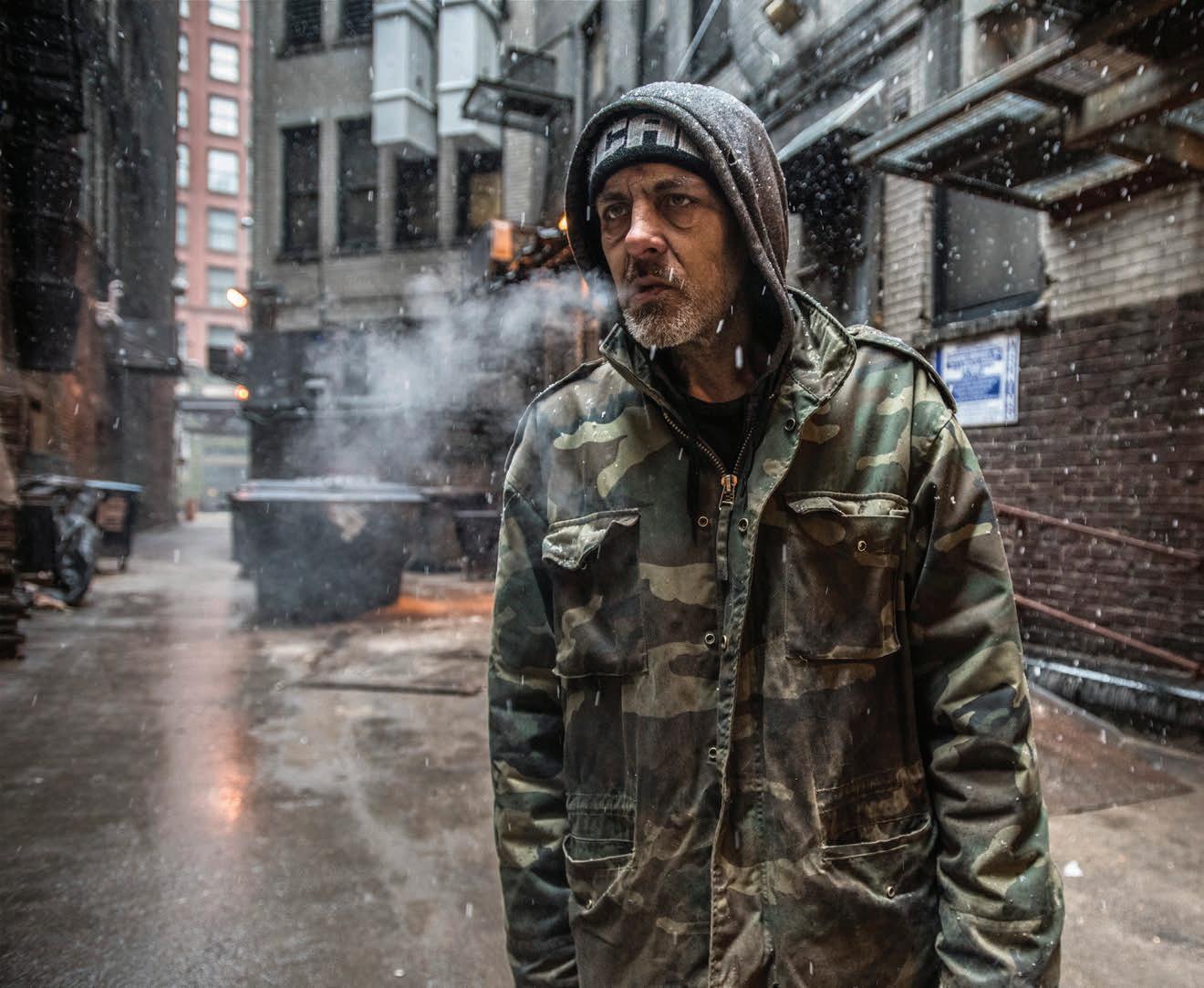
“Yea it’s slow down here. People already
think we’re full of disease. Now we are looked at as walking, sitting, time bombs. No one is giving nothing. We got to figure out how us homeless can receive something from the government . . . we Americans too.”
A few days later I photographed the pages in his journal.
“My memory is getting bad. 2 days without food or nothing else, just some coffee and cigarette butts to smoke. Everyday seems the same. The city is dead, are we next? I thought about jumpin o the roof of a building I know I can get into. But I don’t have it in me. It’s serious, people see me and walk way around me. Writing in this notebook makes me realize how repetitive my life is. Same shit di erent day. I know this much . . . it’s gonna be a different world when this is over. This ‘distance’
thing is gonna last a long time.”
STACEY LIVES WITH HER partner
Greg and their cat Simba along Lower Wacker. Stacey woke up one morning to the sound of city workers delivering a washing station to her encampment.
“I was barely awake and they just said, ‘Keep washing your hands.’ That’s what they told me. As they were leaving they said, ‘You’ll get more information Thursday.’ Thursday is the day when city sanitation workers, with a police escort, come down to Lower Wacker and clean things up. Sometimes they do a power wash, sometimes a trash pickup. People that live in the Underworld must be in their camp, standing next to their belongings, or the city workers will throw all of their posses-
12 CHICAGO READER - APRIL 16, 2020 ll
Jimmy in an alley during a snowstorm; March 22, 2020
continued from 11
sions into a trash truck. No questions asked, everything you own is suddenly gone. You’re done!”
Stacey and other homeless people who I talked to knew very little about the pandemic and coronavirus. “The news I get about anything is when I’m out on the street hustling and people walk up to me and say, ‘Keep your hands washed or you’ll get sick,’” Stacey said.


I talked with her man Greg on the street earlier that day. Greg told me, “The only news I hear about is from reading the captions o of the TVs I walk past that are in the windows of bars and restaurants, but they’re all going to be closed now. Sometimes people tell me things about the news. You just told me it’s all over the world. Jesus! No, I never talked about this with any other homeless people that I know. It’s like the flu, I heard. What I do know, for sure, is that there are fewer people walking downtown today.”
A few days later Stacey told me that things are changing. “I’m hustling on the street now and the few people that are out are talking to me now, they’re friendlier,” she said. “These are some of the people that walk by me every day, everybody was in such a big rush to get their train. Now, they’re asking me how I’m doing. I’m OK, I tell them. I ask them how they are because I know that everybody is hurting, some more than others. City workers came back down to us and dropped off a portable toilet. It was like Christmas. Wow, a toilet at our camp. All we had before was a white plastic bucket.”
TAY IS AN ARTIST. On the streets he tries to sell his drawings of iconic Chicago landmarks to passersby. He’s usually successful, but now the streets are empty.
“The last two or three days we’ve had very little food. People aren’t coming down here anymore. They’re afraid because of the virus. Monetarily, I make my money hustling my art. So, the more people that are out on the street the better are my chances of selling my art. All it takes is for one person to make my day. But with no people around we are all getting desperate. The virus intensifies the desperation. The streets yeah, it’s so bad. It’s unalive now. I can’t get past how surreal it all is. I keep thinking it’s got to be a bad joke. I hear homeless people talking under Lower Wacker and they’re saying it’s like the zombie apocalypse. I tell them don’t be talkin’ that shit now.
“As much as I don’t like being around hordes of people, I learned that I can do some necessary thinking just walking amongst the city’s residents. Now, I feel out of place seeing downtown like it is. I have no words to describe what I’m thinking. All I see are stragglers going . . . wherever.” v
APRIL 16, 2020 - CHICAGO READER 13
Above: Stacey holds Simba and stands next to a portable wash station; March 15, 2020 Below: Tay smokes a cigarette fl anked by the pillars that support the “Up Top” streets; April 6, 2020
JAMES IJAMES
ARTS & CULTURE
by



RELATIONSHIPS
Dating at
By RACHEL HAWLEY
distance



Icruised through my pre-date ritual with a rhythmic familiarity: showered, moisturized, tweezed errant hairs from my eyebrows, put on makeup, threw on my favorite jeans and sweater, and paced around my room to whittle away at the nervous pit in my stomach. Standing in front of the mirror, I swiveled back and forth to investigate every angle, grimacing at the way my ass looked in my jeans as I normally would before catching myself—on the other side of the webcam, I would exist only from the shoulders up, and in one dimension.
I have been on first dates at bars, restaurants, and co ee shops. I’ve been to the Art Institute, to a student opera, and to improv shows. I had, until recently, never had a first date over Google Hangouts—a few weeks ago I would have laughed at the prospect. Since then, the world has changed, in ways that, if not outright horrific, are just mundanely bizarre.
“I’m inspired by your dedication to putting yourself out there,” a friend told me when I mentioned I was still using dating apps even as the city entered into lockdown.
“That’s one way of looking at it,” I replied. Even now, the apps have maintained their usual staples: preppy consultants who promise your mom will love them, aspiring rappers whose profiles link to their Soundcloud tracks, aloof men who claim to be there “for a good

time, not a long time,” and couples seeking a third party for threesomes. It only takes a moment of swiping through profiles, however, to find reminders of the extraordinary event we’re living through, namely, in the form of pickup lines. “If coronavirus doesn’t take you out, I will,” read a few profiles. “Imagine telling our kids about our first date over Zoom,” another said.

Determined to retain usership at a time when so many sectors of the economy have been decimated by the crisis, dating apps have responded to stay-at-home orders by steering into the skid. For the month of April, Tinder has removed the paywall on Passport, a feature which allows users to search by city around the world. Tinder and other dating apps such as Bumble and Hinge are pushing “virtual dating” as a replacement for the real thing. “Get together while staying apart,” a banner ad on Bumble reads, while Hinge advises that “70% of Hinge members would be up for a phone or video call right now. No pressure, just keep it short and fun!”
Quarantine, the apps claim, has been a boon for online dating. Bumble reported to Mother Jones an increase in messages sent through the app of at least 20 percent, with bigger boosts in large, heavily impacted cities. Tinder likewise reported an increase of 10–15 percent



14 CHICAGO READER - APRIL 16, 2020 ll
a
What it’s like to virtually flirt at the hot new first-date spot: Google Hangouts
ANDERSONVILLE UPDATES SUPPORTING OUR BUSINESS COMMUNITY IN THE WEEKS TO COME andersonville.org/updates WATCH FROM HOME! REMOTE VIEWING PERFORMANCES NOW AVAILABLE LIMITED AVAILABILITY NOW – APRIL 19 773.281.8463 TIMELINETHEATRE.COM – Chicago Reader “STANDS AT THE UNICORN-RARE INTERSECTION OF MESMERIZING AND INDISPENSABLE ” by
directed
WARDELL JULIUS CLARK CHICAGO PREMIERE
in mid-March, around the time restaurants and bars began closing down in most major cities. What’s more, Vice reported that in-app Tinder conversations in the UK have been lasting longer since quarantine began.
I am a longtime on-and-o dating app user, but I haven’t given the apps more than a cursory glance since I started working at the Reader in December. A few weeks ago, however, fueled by boredom and loneliness, I began swiping through Tinder and Hinge. Immediately, I noticed a difference in my own behavior on the apps; where I have usually been too shy to message first and choosy about whom I reply to, I now found myself messaging or responding to messages from most of the people I matched with. Those first messages presented variations on a clear theme: “How are you holding up?” “How is quarantine treating you?” “Are you going stir-crazy yet?” Gone is the pressure to find an opening salvo that can transition into fertile conversational ground—there’s plenty to talk about where coronavirus is concerned.


I maintained longer conversations with about ten men in the Chicago area, whose ages ranged from early to late twenties. Some were working from home, some had lost their jobs due to the virus, and two were graduate students attempting to take classes over Zoom. There were, notably, no essential workers among this group. Our conversations flitted between the present and past tense, describing our lives before and after the crisis began. On a few occasions, one of us momentarily forgot the ways in which coronavirus has put our normal routines on hold. “I love going to bar trivia,” one guy told me, “. . . or, I guess I used to.”
Eventually, all but three conversations fizzled out, at which point it was time to suggest a virtual date. On the day of each date, 15 minutes before the agreed-upon time, I began positioning and repositioning my bedroom lamp in search of the best possible webcam lighting. Then, I opened Google Hangouts, ran my fingers through my hair repeatedly for a casually tousled look, and invited my date to join the call, each beat of my heart landing with a thud in my chest as I tried to maintain a collected façade.
Removing the natural context of an in-person date also strips away many avenues for small talk; you can’t dip your toe in the conversational waters by asking if their trip to the date location was alright, or what looks good on the menu. My virtual dates each began with some variation of one party sheepishly murmuring, “so, how was your day?” While the flow of con-
versation was sometimes more awkward than on a real-life date—pauses in conversation, screen lag, both parties talking at the same time—sitting across from a nervous stranger felt less daunting from the comfort of my own bedroom. We bounced between discussing non-coronavirus topics and the pandemic and its effect on our lives. One feared potential layo s at work; another expressed frustration with his roommate’s choice to go on an in-person date. We also discussed the typical subject matter of first dates: our families, our jobs, our hobbies, and our favorite books and movies. I politely cut one date short (without anywhere I might plausibly need to be, I resorted to the time-tested classic, “sorry, my mom is calling me”), but on another, I was shocked to look at the clock and find that we’d spent more than an hour and a half talking.
One doubt that has lingered with me is whether or not a virtual date provides the same kind of information about a person that an in-person date does, and whether my virtual experiences are enough to ascertain whether I’d like to see these men again. Before meeting, it’s di cult to gauge chemistry; God knows, I’ve had lovely texting exchanges with people only to then realize four minutes into the first date that there simply is no spark. My impressions from the Google Hangouts are valuable—I’ve learned who can make me laugh, who shares my politics, who I can carry on a conversation with. But in some ineffable way, meeting on either side of a webcam fails to capture the experience of meeting a person in flesh and blood, just as taking a virtual tour of an apartment will never compare to the experience of standing inside it.
Dating is a series of cumulative escalations— second and third dates, sex, commitment, and so on—and being unable to meet in person puts the possibility of escalation on hold, such that my flirtationships feel almost hypothetical at times. Perhaps part of the problem is that the future has become nearly impossible to imagine. Will quarantine be lifted on April 30, as the current stay-at-home order suggests? Or will it be extended into May or June? I have no idea what my life or the broader world will look like in a month or three or six; there is only this moment, boring and lonely as it often is.
As for right now, I’m planning on a second virtual date with one of the guys I saw last week. It’s strange to feel cheerful about anything at a time like this. Still, I can’t help but feel optimistic, even if I might not get to stand within six feet of him for a while yet. v
@boughsofhawley
APRIL 16, 2020 - CHICAGO READER 15
RACHEL HAWLEY ARTS & CULTURE
Lane Moore knows How to Be Alone
By S. NICOLE LANE
Ipurchased How to Be Alone sometime last year when my partner and I were taking a break. I remember sitting in the bathtub tearing up, sinking in my bubbles, and tweeting to Lane Moore, the author of the book, that she was getting me through a rough time. I’ve never known how to be alone. I still don’t. I’m a serial monogamist, and even now, my partner (we reconciled six months later) is isolated here with me (like, right next to me). Yes, being alone is something I enjoy—on walks, at the grocery store, in the shower, for a few hours while writing—but overall, I’m a shit person without my buds, family, and lips to kiss.
Moore’s book helped me gain some confidence in aloneness.

The award-winning comedian, writer, musician, and actor writes in her book, “I am working every day, tirelessly, like you wouldn’t believe, on being fine, fucking finally, can we get this over with, I’m so tired and I just want to travel and eat and smile and move through the world with a semblance of peace.” These words coincide perfectly with our world right now. Right now, if we are alone or together, we are working, working harder than ever before to remain afloat, to try and manage some sort of normalcy in a time when everything is twist-
ed upside down and backward.

I had planned to either meet or phone-chat with Moore (who is based in New York) when she came to Chicago for her Tinder LIVE! tour. During the show, Moore pulls up her Tinder onstage and the crowd decides if she swipes left or right. Her scheduled Chicago dates were in April, but then the pandemic happened. So Moore had to get creative. At first, she was devastated. “So I thought wait, wait, there’s got to be a way to stay connected with my audiences, and be alone together right now, and still do live shows, because artists and audiences need each other,” she says. “Well, I literally wrote


16 CHICAGO READER - APRIL 16, 2020 ll ARTS & CULTURE
COMEDY
The author and comedian shares her techniques while also bringing people together with a daily livestream.
Streams Mondays and Fridays at 8 PM EST on Twitch and Instagram Live. You can find previous episodes on Moore’s Patreon. Her Venmo is @ hellolanemoore.


ARTS












the book on how to be alone, and now I make my living doing live comedy and music, so I created this livestream show.”





Moore describes her livestream, How to Be Alone, as a “late-night show” where she talks about how she’s doing, how she’s feeling, and then opens up the chat to viewers. “Then we watch funny videos from the 50s/60s and I make jokes throughout them, like Mystery Science Theater,” she says. “Then we play an ’80s board game I have, Heartthrob, and the audience guesses who I’m gonna pick, which is a lot like Tinder LIVE! in that way. Sometimes I do Tinder LIVE! as well.” Moore ends her shows with a “musical guest,” where she covers songs in a karaoke-style performance of whatever artists she chooses (viewers can o er up suggestions, too). I had the pleasure of hearing Moore cover Fiona Apple’s “On the Bound”—she belted out a perfect pandemic tune that made one of the viewers say that they may consider becoming an Apple fan.
Moore’s band, It Was Romance, is releasing their second album this year so the livestream is a way for Moore to promote it. “And right now every show is donation based, either through Venmo, Paypal, or Patreon, so it’s really supported by the viewers,” she explains. Throughout the stream, the cha-ching noise from her Venmo goes o and Moore gleefully thanks her kind donors via video.







Though during the livestream it seems like Moore is simply chatting with an old friend, she does say some preparation is involved. “I choose the videos for the night, and the songs, and often will prepare to talk about a certain question people had on loneliness/isolation during this time, but the show is totally improvised otherwise, which is really fun.” And you can see the excitement Moore has when watching videos for the first time with her viewers. Improvisation is sort of Moore’s thing, it seems, as she gets a thrill from spontaneity.
What I especially appreciated as a viewer was how I could be invisible if I chose to be or I could enter the chat room (like the good ol’ AIM days) and chat with Moore’s fans if I was craving some Internet connections. Moore agrees. “Dude, the How to Be Alone viewers are so connected it’s magical.” Although she doesn’t get to directly participate in the chat because she’s performing, she thinks it’s exciting and special to watch her fan base grow and get to know one another at the same time. Future shows for Moore may look di erent
than these beginning stages. She may bring on video gaming, as Twitch is a platform typically used for gamers, and she may start up her idea for a children’s show called Strawberry Milk But for right now, Moore is just trying to hang on. “Like most of us right now, it’s gonna take me a minute to get used to a completely new world,” she says. “I’m still grieving so much, and trying to help people through it who are grieving too. I’m trying to tell myself to just keep taking it one step at a time, but I’m really excited to see where the How to Be Alone livestreaming show can go.” v
APRIL 16, 2020 - CHICAGO READER 17
& CULTURE R HOW TO BE ALONE
@snicolelane Lane Moore KATIA TEMKIN Dr. Mauricio Consalter has been serving medical cannabis patients since 2015 and is now expanding his practice to include a wider range of treatment options for his patients with intractable chronic pain and mental health disorders. If you'd like more information about adding medical cannabis or infusion therapy into your wellness plan, contact us today! Telemed Available! www.neuromedici.com 312-772-2313 Yourpartnersinhealthandwellness. JOINTODAYAND GETINVOLVED!
GAMES









Jackbox Games is sweeping the nation
BY BRIANNA WELLEN
Quiplash . Zeeple Dome . Trivia Murder Party. What once might have looked like just a nonsense string of words is now recognizable as a list of games being played on Zoom meetings, Google Hangouts, and Twitch streams in isolation thanks to Jackbox Games. The Chicago-based company has seen a record number of downloads of its six di erent party packs over the last month, providing many at a discounted price and o ering tips on how to organize remote games on its blog (they even lay out how the games can be used for homeschooling). And the company has found itself in the spotlight outside of our Instagram stories thanks to initiatives like Broadway Jackbox, a weekly livestream game started by Dear Evan Hansen’s Andrew Barth Feldman that features Broadway stars and raises money for out-ofwork performers across the country through the Actors Fund. I hopped on a Google Hangout with Jackbox Games CEO Mike Bilder to check in with the company, dive into its history, and learn a little more about what goes into creating the games we’re now playing daily.
Brianna Wellen: Based on my personal experience playing so much Jackbox in the past few weeks, I can imagine this is a crazy time for you guys.
Mike Bilder: Yes, it’s been very busy for us. We’re happy about that because it brings some social interaction and some fun and levity to what is a very stressful and anxious time.






Do you have any numbers on how many more games have been downloaded in the past few weeks?








What I can tell you is just about every day as far as tra c is concerned, with games played on our servers and that type of thing, it’s equivalent to Thanksgiving. And the weekends are
















equivalent to New Year’s Eve. The holidays are typically the biggest time of year for us, when everyone’s back at home and together. Right now, no one is together, but they’re all together playing over video conferencing and finding a way to still socialize.
Many of the people I’ve been playing with didn’t realize Jackbox was based here. How did the company get started here?
It was known as Jellyvision [when the company started in 1995], and it was best known for a successful trivia game called You Don’t Know Jack. There were a number of versions of that on PC CD-ROM played on PCs and Macs at the time. The company ultimately fell on hard times in the early 2000s: there was a rise in home gaming with consoles, and a lot of the CD-ROM market—the bottom fell out of it. I joined in 2008 to restart the company’s gaming initiatives. In 2014 we did our first game where you use your mobile phone as a controller, that was Fibbage. It took some iteration to get to that idea, but the impetus behind it was we recognize that most people have one controller on their console—multiplayer gaming played over a console, you play over the Internet. You have your PlayStation, I have my PlayStation, and we connect and play a game together. We want to make party games, social games that happen in the same room, that make social interaction occur and make laughter and levity occur.




So the games that everyone is playing right now are actually fairly new to the whole company’s history.
Yes, but they’re kind of still built on the DNA of what the original You Don’t Know Jack is about, which is bringing people together. Back then it was three people had to gather around a keyboard and they each had a button to buzz












18 CHICAGO READER - APRIL 16, 2020 ll
The head of the Chicago-based company on bringing laughter and levity to a stressful time
ARTS & CULTURE Due to business closings and for safety purposes, the Chicago Reader is going biweekly with a print run to 600+ locations, including our box route. On the o weeks (April 9, 23, May 7) the Reader is just being distributed as a free PDF, with a small press run to ful ll subscriber and library mailings. We are also making a limited number of copies available for special short-term subscriptions, 12 weeks for $50, and every week’s issue will be mailed to your home. Just a few hundred copies will be sold of these very limited souvenir editions of the Reader: secure.actblue.com/donate/chicago-reader-print-12 Important Reader News Thank you, The Reader team Find the full curated PDF download of the Reader at by Wednesday each week. chicagoreader.com/issues
in. There was interaction with the game: it was talking and would talk with you and there were jokes and irreverence and humor, so the same kind of DNA of what that [intellectual property] was is definitely in all the games and the direction for creativity that we put into all our games.
What is the process of coming up with and creating these games?



We’ve got a very, very talented sta . We employ full-time and some contract writers; a lot of them have cut their teeth in the Chicago comedy scene, so Second City, iO—they’re comedy writers at heart. Anyone at the company can pitch games. At this point, we’ve done this kind of annual cycle: we ship the party pack in October and then we immediately start concepting and pitching and prototyping internally to figure out what the games will be in the next year’s pack. It’s a very open process.

We’ll help assign teams or resources to a concept if it gets some traction, so we want to build a digital prototype of it. There’s a lot of paper-and-pencil testing where we can, and then sometimes you have to make a digital prototype based on the function of the game. Then those are evaluated and we have a green-light committee and a process where we go through approving and disapproving games. It’s a very fun process, it happens very quickly, but it’s neat because, like I said, a lot of people have opportunities to pitch, and I think that’s what keeps it fresh. We’ve done 30 games now over the last five years or so, and you can easily fall into a rut of, “Ah, it’s kind of the same game with just a di erent coat of paint.” We always try to push the envelope where we can.
Are there any rejected games that you still love or ones that get pitched over and over again until they finally make it through?

There’s both. There are a few internally that I really like that just aren’t quite ready for prime time, and I’m hoping in coming years they’ll get there. We have a few games as well that actually have that path. If you’ve played Fakin’ It, that’s the hidden-identity game where you have to be the faker and try to blend in, then we have another game in a similar tone called Push the Button, which is another hidden-identity game that’s more strategic, a bit more like Werewolf or Secret Hitler, those kind of games. But both of those were very challenging to crack in a digital form. We knew we wanted to make these





kinds of games because we love playing games like that, but Fakin’ It was pitched for two years and Push the Button was pitched for almost three years before it was finally green-lit.
It feels like the Chicago gaming community, both people playing the games and people creating them, has really grown in the past ten years. What have you noticed in that time?
It used to be more large, established companies. We had Midway Games, they did a lot of coin-op, they did a lot of consoles, we had EA Chicago for a while. Neither of those kinds of big entities exists anymore, but out of the kind of disruption of them going away, a lot of people formed companies or built up teams. So there is still a very vibrant community in Chicago of game development. No one is a hub of big publishers, but there’s a lot of little people. It’s a neat community.
What’s happening now is a ecting a lot of businesses very di erently and you guys are obviously benefiting from it. How has this a ected your sta and how does that change things in the future?













We have brought on a number of temporary workers in the last three weeks just to handle customer service tickets—we’ve had this influx of new customers that just kind of happened overnight—so that has pushed some efforts into other areas for us where we’ve had to sta up. So that’s one good thing that’s come out of this, we’ve been able to hire people. How it changes in the long-term, I really don’t know. Eventually things will settle down when the world gets back to normal. What that means for us moving forward as far as our customer base and our usage, I don’t know, I suspect it will decline as the world goes back to work, but I do think it’s leveled up from where we were before. I think we’re fortunate for that and we’re happy to have new people in our ecosystem wanting to play our games. v
@BriannaWellen
APRIL 16, 2020 - CHICAGO READER 19
ARTS & CULTURE COmedy from Your cOUCh Connect, Laugh, Create with People Around the World Through Virtual Classes! IMPROV • STAND-UP • WRITING • & MORE! SECONDCITYONLINE.COM • 312-337-3992 Thrive in Challenging Times LIfe coaching Powerful one-on-one coaching to help you deepen your relationships, excel in your career, and reach your full potential! wrightfoundation.org/coachingpleaserecycle thispaper
THEATER
THEATER Stage to screen
Scott Silberstein tells us how HMS Media captures the magic of live performance.
 By KERRY REID
By KERRY REID
If COVID-19 hadn’t shuttered all the theaters in town about a month ago, Scott Silberstein estimates that his company, HMS Media, “would have been in ten di erent theaters over five or six days, capturing everything possible.” Par for the course for HMS, which has recorded live performances of everything from small dance companies to touring Broadway productions over the years, as well as creating original documentaries about Second City and John Kander and Fred Ebb, the legendary songwriting team behind Cabaret and Chicago, for WTTW.
Instead, like everyone else, Silberstein and the company he cofounded 32 years ago had to retreat and rejigger. They worked with the Actors Fund to create a video of Carole King’s “You’ve Got a Friend,” featuring actors and musicians from Beautiful, the hit King biomusical, performing from quarantine (including Chicago native Jessie Mueller, who won a Tony for playing King in 2014, and her sister Abby Mueller, who played the role on tour). Silberstein and his fiancée have also postponed their wedding until after the shutdown. With so many fans of live performance now getting their fix through the screen with


streaming productions, both newly created and archival, it seemed like a good time to check in with Silberstein about what he and HMS view as the most essential tricks of the trade.
Silberstein and his HMS partner, Matt Homan, met at Wisconsin’s Camp Nebagamon when they were 13. A shared love of the Beatles brought them together in a camp version of Beatlemania, and they stayed friends through college (Silberstein at University of Pennsylvania, Hoffman at Syracuse). The camp also provided Silberstein with an introduction to Kander, who was his dad’s counselor at Nebagamon in the 1950s.
“You just can’t get a better mentor,” says Silberstein. “John was all about collaboration and all about not knowing, but going for discovery and humility and ensemble. Which is remarkable for a man in the Broadway world, because that’s not necessarily an environment that Broadway fosters.”
Silberstein joined Ho man in Chicago after graduating and they worked at a cable production facility. Their first collaboration to gain notice was a documentary highlighting the work of Rape Victim Advocates, Why Am I Hiding?, which Ho man directed. That won
22 CHICAGO READER - APRIL 16, 2020 ll
WE ARE ONE. ONE COMMUNITY, ONE CITY. For now, we embrace shelter-in-place. But we’ll dance together again soon. In our studios and far beyond. When the time is right. AND THE CITY HAS WON. Be well, The Joffrey Ballet Community
Joffrey Artist Jeraldine Mendoza and ensemble. Photo by Cheryl Mann.
Scott Silberstein COURTESY HMS MEDIA
a couple of local Emmy Awards and launched their relationship with WTTW.



Before shooting theater productions, HMS first got into capturing dance on camera. The first Chicago modern dance performance Silberstein saw with the now-gone Lynda Martha Dance Company was because Martha, one of his neighbors, wanted to set him up with one of her dancers. He became hooked instantly on the art form, if not the artist.
“The only way I could describe what I saw was to say ‘This is what music looks like.’” With he and Hoffman both having musical backgrounds—Silberstein is a classically trained pianist—the transition to translating dance for video came naturally. A special they did for WTTW on River North Dance Company followed.
For Silberstein, the key to doing the work well lies in both preparation and improvisation. “The phrase we kept using was make it not just presentational, but make it invitational. You can only take that so far when you’re




archiving [a live performance]. But if you’re doing something that is a documentary, like the River North special . . . we take a look at it and say, ‘Well, what can we do with video that only video can do?’ What can you do?

You can violate time-space continuum. You can give people access to places they couldn’t go, in quick proximity that they could never have, and show them things in an hour that might otherwise take them three days to get to everything.”
He adds, “Even when we’re doing full-out live performance specials, we start with ‘What’s the analogous experience? What can we do that feels really responsive to what’s happening onstage as opposed to capturing it? We’ll have shooting scripts in the sense of ‘Here’s what’s about to happen.’ But however it happened at rehearsal is not how it’s going to happen tonight. Renée Fleming might be in one frame of mind in the afternoon rehearsal, but now she’s in her wonderful formal gown and there’s a whole other energy and there’s an audience. So we’ve got to make sure that we’re in a position to respond to Renée, as opposed
to capturing her.”


For his sta , that means hiring camera operators with “innate talent and a willingness to surrender to the logistics. If you are a camera op who needs to have things a certain way with a certain amount of light and a certain amount of control, this is probably not for you.” Instead, Silberstein and HMS embrace the “yes, and” ethos of Chicago improvisation, where obstacles become opportunities.
Silberstein notes that many people think that the bigger the show, the more cameras you need. The opposite is often true.
“Think about this big musical I just shot for you. There’s stu happening around the stage all the time. If I cut wide, that shot is meaningful. You can actually make that look really good with two cameras. Now the play that we’re about to shoot, there’s a scene where someone is all the way stage left, someone’s center, and someone’s all the way stage right. You want close-ups of everybody at any given time. Our editors know that sometimes you don’t want to edit that shot too soon, because part of the joy of the moment is popping your head over
to catch them a half second after they started speaking, as opposed to half a second before. In that split-second di erence, all your energy is gone, because your element of surprise is gone.”
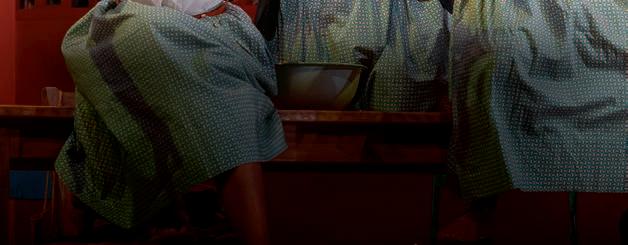
Audio quality remains a key for a good video experience, notes Silberstein. “A great audio design can make so-so video feel like it looks better than it actually is.”

For companies creating new content or repurposing older content online for the shutdown, Silberstein thinks the same questions he asks artists at the start of any collaboration apply. “Why this video? Why this platform? Who is it for, and why do we think they’ll be interested?”

But he also finds value in watching older performances and the sense of community it captures for our current state of isolation. “The magic is the space between what’s onstage and the audience and that air. We’re trying to shoot that energy of that air, and hopefully that’s what you feel when you see it.” v
@kerryreid
By Jocelyn
by Lili-Anne Brown
APRIL 16, 2020 - CHICAGO READER 23
THEATER
NOW ONLINE!SCHOOL GIRLS; OR, THE AFRICAN MEAN GIRLS PLAY
Bioh, Directed
Through April 26 only Stream this “nasty-teen comedy, wonderfully refreshed and deepened” (The New York Times) from the comfort of your home! GoodmanTheatre.org/StreamSchoolGirlsMajor Corporate Sponsor Corporate Sponsor Partners
THEATER
From Poe to hummingbirds, Fleabag to Disney
Four streaming theater pieces to watch this week
By KERRY REID
When you’re used to seeing at least three or four shows a week at the theater, adjusting to online content is a challenge. Over the last few days, there have been mini-uproars around whether critics should even be writing reviews of online shows. Kelly Leonard, executive vice president of Second City, took the Tribune’s Chris Jones to task on Facebook when the latter reviewed Second City’s new created-in-quarantine Improv House Party , writing, “It’s a modestly amusing diversion, no more than that, and it needs a lot of work.” Peter Marks of the Washington Post also caught heat for his reviews of online productions. What are the rules now? Should free content get more of a critical pass than paid streaming events? Is there any point to reviewing archival content for a show that closed years ago? Are you reviewing the story or the technology? I’m not sure I have the answers as a critic, and I’m damn sure I’m in no position to be offering prescriptions to artists—or anyone else right now—for how to survive this plague creatively. So consider what I’m providing here as more
of a quick overview of a few ways that artists and theater companies are trying to keep the virtual lights on in the quarantine.
Masque of the Red Coronavirus Black Button Eyes goes all in with creating new material in direct response to COVID-19 by ri ng on Edgar Allan Poe’s classic short story “The Masque of the Red Death,” about a group of elites shutting themselves off in a pleasure palace during a plague. The connection makes sense for the company, which has made staging the supernatural its calling card. Here, we have a Trumpian Prince, played by Shane Roberie, toggling between self-pity and self-aggrandizement as he introduces clips from a variety of performers, including burlesque artist Cyn S Tease Ya doing a Salome-esque “Dance of the Seven Gels,” Scott Gryder performing a macabre song (composed by Jonathon Lynch) with a spider puppet, Mikaela Sullivan singing “Elle a fui, la tourterelle” from The Tales of Ho mann, and Dawn Xiana Moon demonstrating a thrilling fire dance.
As in the original, the rich can’t hide forev-
er, and if your appetite for vengeance is in the red zone, this is the show for you. Black Button Eyes puts the text of the show (including suggestions for how this could be staged in a full theatrical production) on the company website along with the series of videos, creating a combination of a literary and visual experience. blackbuttoneyes.com, free
Play(s) at Home Connective Theatre Company had to cancel their planned production of Morning in America , based on interviews from people across the political spectrum. They instead solicited submissions about COVID-19 for this virtual play festival and selected eight short pieces, which they rehearsed via Zoom, shot, and edited in 72 hours. They’re broken into three “acts,” all reflecting di erent aspects of what living in isolation means, and company artistic director Chase Hauser talks to therapist Erich Heintzen about coping mechanisms between the acts.
The pieces range from the satirical, as in Leah Huskey’s Coronavirus: The Game Show, in which Huskey’s contestant keeps giving “take another nap” as the correct answer, to the meditative: Kathleen Cahill’s monologue, Being Here Now, illustrates how FOMO feels even more oppressive in quarantine, as Tehilla Newman’s Valerie laments missing her chance to see the brightly hued elegant trogon hummingbird on a social-distancing nature walk. Anxiety about the fi nancial future comes through in Mary Athena’s Clown, as a woman who lost her job during the shutdown submits to having cream pies shoved in her face for money.
Heintzen provides reassuring perspectives along the way for theatermakers and viewers. “This [shutdown] might give you an opportunity to do things you’ve been wanting to do,” he says, adding “but it’s also important to acknowledge that we may not get to everything that we wanted to. And that’s OK, too.” The company is soliciting scripts through April 20 for their next o ering, Play(s) at Home: a Green Theatre Festival . connectivetheatrecompany.com, free
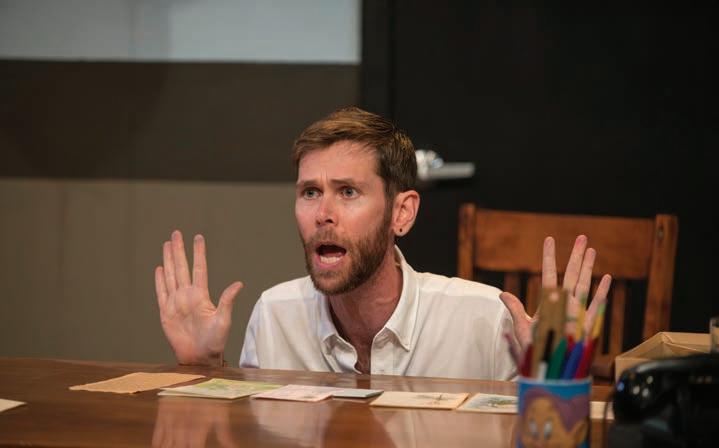
Fleabag
Consider this limited-time streaming performance a reverse commute of sorts, since most
of us came to Phoebe Waller-Bridge’s nameless character through bingeing both seasons of Fleabag on Amazon Prime. But until April 24, you can watch this recording from last year, in which Waller-Bridge reprises the 2013 one-woman stage show that started it all.
Fair warning: there are some even darker moments in the stage version that didn’t make it to the series. But though created long before we were all spending too much time with ourselves, Fleabag still speaks to the age of isolation and the desire for connection, no matter how fleeting or seemingly sordid it might be. Waller-Bridge’s quicksilver ability to switch from one character to another feels like a welcome throwback to great solo work of decades past from the likes of John Leguizamo or Lily Tomlin. When Joe, the cockney regular at the “guinea pig cafe” asks WallerBridge’s proprietor, “When will people realize that people are all we got?,” it lands with extra emotional oomph. sohotheatreondemand.com, $5 (proceeds benefit COVID-19 relief e orts)
The Happiest Place on Earth
Another previously recorded solo show hits the livestream from Sideshow Theatre Company, which o ers Philip Dawkins’s 2016 Jeff Award–winning piece about how, in the aftermath of his grandfather’s premature (onair) death in New Mexico, his grandmother, mother, and aunts took a trip to Disneyland. Dawkins presents the story, recorded through a single fixed video camera at the back of the Greenhouse Theater, as a pseudolecture. Using an old-fashioned overhead projector to highlight photos and documents, he entwines his family’s story in startling ways with the bogus vision of America, or what he calls “the national fantasy,” dreamed up by Walt Disney.
Throughout the show, Dawkins introduces all the parks within the park at Disneyland with snippets of what was said at the o cial opening, from the anti–Native American sentiments in Frontierland to the misogynist comments about women drivers in Tomorrowland. The isolated world of merriment at Disneyland has its own echoes of “The Masque of the Red Death.” But thankfully, the women in Dawkins’s family found a way to escape by embracing the reality that “nothing is promised, and no one lives happily ever after.” sideshowtheatre.org, pay what you wish v
24 CHICAGO READER - APRIL 16, 2020 ll THEATER
Philip Dawkins in The Happiest Place on Earth MICHAEL BROSILOW
@kerryreid
The At-Home Genre Fest
By CODY CORRALL
We might not be able to go to movie theaters for the foreseeable future, but that doesn’t mean we can’t stream and support some new releases. Now more than ever feels like a perfect time to dive into some fresh genre films—they are uniquely able to transport you to another world and provide a much-needed distraction, but they can also allow you to think about the current state of our world with a fresh perspective. From cults to creature features, these o erings will make for a rousing genre fest you can host from the comfort of your own home.
Blow the Man Down
Directed by Bridget Savage Cole and Danielle Krudy (streaming on Amazon Prime Video)
Sea shanties and mischief abound in Bridget Savage Cole and Danielle Krudy’s impressive debut feature. Following the death of their mother, two sisters (Sophie Lowe and Morgan Saylor) find themselves uncovering a series of macabre secrets—and attempt to cover up some of their own—in their seemingly picture-perfect New England fishing town. It’s an incredibly cunning mystery with a charm-
ing cast of characters who ultimately crack under the pressure of keeping up with their appearances.
Bacurau
Directed by Kleber Mendonça Filho and Juliano Dornelles (available to rent on KinoNow, with half of proceeds benefiting the Music Box Theatre)
Vibrant in its presentation and ballsy in its form, Kleber Mendonça Filho and Juliano Dornelles’s Cannes Jury Prize winner offers an inventive, genre-bending twist on the longstanding horrors of colonialism. The people of a small Brazilian village mourn its matriarch, and they grow tired of their corrupt leader who lives in luxury while they barely scrape by. But when the town is suddenly nowhere to be found on maps, UFOs are spotted in the air, and mercenaries come out to play, it’s quickly revealed that there are other, more sinister forces at play. It’s a rallying cry against structural injustice told through a satisfying blend of western and science fiction influences.
The Other Lamb
Directed by Małgorzata Szumowska (avail-

able to rent on Amazon Prime Video and Google Play)

There have been a handful of films that touch on cults in recent years—from Charlie Says to Once Upon a Time in Hollywood , among others—and Małgorzata Szumowska’s The Other Lamb is a worthy addition that focuses on an often overlooked theme: revenge. A young woman born into an all-female cult, led by a man known as “The Shepherd,” begins to question the only thing she’s ever known. Her quest for autonomy is underscored by violent visions, striking cinematography, and a haunting score that will stay with you long after the credits roll. The Other Lamb is not a subtle allegory, but it never claims to be. Rather, it’s a phoenix rising from the ashes and taking no shit.

Sea Fever
Directed by Neasa Hardiman (available to rent on Amazon Prime Video)
For fans of sea monsters and pandemic horror, Neasa Hardiman’s indie feature is sure to be a crowd pleaser. In Sea Fever , an introverted marine biologist joins a tight-knit crew on the Atlantic for her research, but plans change when members of the crew become infected after coming across a dangerous, unidentifiable creature. The film dives into high-stakes problem-solving that’s gripping from beginning to end—from interrogations to quarantining and testing—while heralding an all-too-relevant moral message of the importance of distancing oneself for the greater good.
The Sharks Directed by Lucía Garibaldi (available on VOD April 14)
Lucía Garibaldi’s Sundance darling is a searing take on the coming-of-age flick set in a small beachside town that becomes enraptured by rumors of a shark invasion. Fourteen-year-old Rosina lives her life unnoticed and dismissed, even when she tells her father she may have seen a dorsal fin in the water. Unsure of whether or not it was a product of her imagination, Rosina is haunted by the shark, laying the groundwork for a complicated sense of self and sexuality. The Sharks ruminates on desire through an unlikely female gaze: one of predator vs. prey.

APRIL 16, 2020 - CHICAGO READER 25 FILM
@dykediscourse Blow
the
Man Down PREVIEW
Enjoy a mini streaming film festival, all from the comfort of your couch.
See you on the other side, Chicago. chicagodancesupply.com Chicago's Free Weekly Since 1971 We Couldn't Be Free Without You— Support Community Journalism chicagoreader.com/donate
Nnamdï
By TIM CRISP
In winter 2018, Nnamdï sat in his swivel chair in the basement recording studio of his home in Portage Park, listening intently to the sound of his own voice. A tireless musical polymath, he was using the studio’s monitor speakers to review a batch of 30 or so song sketches for his next album. He hoped to find a common emotional thread in at least a few, to give him a theme to pursue—but what he heard was a sobering message from his own subconscious. Song after song, each in a di erent way, announced itself as the work of a human who wasn’t doing so hot. If he approached what he’d written as a listener, not as its creator, it sounded like a cry for help.
By the time Nnamdï dropped his previous album, 2017’s Drool, he’d already appeared on dozens of releases by a long list of bands. Drool was his 12th solo record, but it was still a land-
“He’s just Nnamdï, and he makes music that’s incredibly real,” says Ratboys front woman Julia Steiner. “His music makes you feel like you can do anything." STEPHANIE BROOKS
With Brat he began going by simply “Nnamdï,” not by his full name, Nnamdi Ogbonnaya—an attempt to mark a new chapter in his personal and musical development. “It also comes from the same brain, same source,” he wrote in a statement explaining the change, “but presented in a more concise, direct way.”
Some of the tunes on Brat carry the desperation he’d heard in his music back in 2018, while others reflect what he discovered as he tried to heal his life. On those later songs, it’s as though current Nnamdï is reaching back to console past Nnamdï.
on Brat
mark for him: coreleased by Bay Area indie Father/Daughter Records, it was the first thing he’d put out on a label not his own, as well as his first full-length to get a vinyl pressing.
Drool earned Nnamdï a wave of recognition from critics and peers, not just in Chicago but far afield, and it quickly changed his life: he sold more music and stepped up his touring regimen, and in summer 2018 he played the Pitchfork festival. He’d quit his day job after Drool came out, and between his frequent tours, he settled back into his favorite space— he holed up in his studio. Nnamdï is gregarious and charming when he goes out, but he was going out less. “The shifts coming back from tour can be di cult,” he says. “I wouldn’t call friends or my family. I’d come home, not sure what to do with myself, so I would just come home and only work on music.” He began to feel
increasingly out of touch with his circle, even the people he cared about most. He’d thought of his creative pursuits as an unqualified good, without realizing what they were costing him.
Those emotions crystallized that winter day in his studio. Three of the songs he’d played back for himself appear on his new album, Brat, which came out the first week of April. Before COVID-19 canceled everything, its release party had been scheduled for Saturday, April 18, at Lincoln Hall.
“The songs on this record are all connected to a particular time frame where I was learning a lot about myself,” Nnamdï says. “It documents a growth period that is one of the most important periods of my life in understanding myself, learning how to be vulnerable, and becoming more confident in who I am as a person.”

I’ve known Nnamdï since 2010, when his first band, an instrumental duo called the ParaMedics, played at my punk house in Normal, Illinois. He’s 29 now, and he’s been making his boundary-defying music since middle school, when he first fell in love with DIY punk, math rock, and hip-hop—still the main currents in his furiously hybridized sound. He’s empathetic and funny, and his songs are harmonious despite their wild complexity. He injects inventive rhythms not only into his drumming and programmed beats but also into his dexterous guitar playing, sharp-edged rapping, and playfully layered vocal arrangements, whose shimmering harmonies sometimes sound almost sanctified. Drool is probably his most stylistically and tonally consistent album—it feels carefully curated, especially compared to the random smatterings of everything and anything on his earlier releases. Brat falls somewhere between those two extremes—it has a lot of variety in its sound, but it’s unified by a strong emotional center.
“When I went and listened to choose some songs for the new record, I picked up on these themes,” Nnamdï says. “They didn’t stem from nothing—it came out of my brain and what I was feeling.” One of those songs is “Flowers to My Demons.” Built around a gorgeously knotty acoustic guitar progression, it repeats a direct appeal that appears on more than half of Brat’s tunes: “I need you / Need something new.” But that “you” isn’t anybody in particular. “I put that in there to motivate myself to keep going,” he explains.
As Nnamdï fought his self-isolation and workaholism, he reminded himself to be more deliberate and consistent about talking to people. He wanted to remember to be open and present, and to check in on friends who’d
26 CHICAGO READER - APRIL 16, 2020 ll MUSIC
grows up
The prolific musical polymath uses his new solo album to teach himself something about work-life balance.
moved away. During the years when Brat took shape, that phrase from “Flowers” became a mantra for him. He also had to work around his tendency toward self-deprecation—with the record’s title and cover photo, for instance, he jokingly cast himself as a petulant child throwing a tantrum. Focusing on art and selfactualization often felt indulgent, but he stayed a “brat”—that is, he sat there and thought about what he’d done. How did he end up as an emotional creature who didn’t know how to express himself? The things he learned from asking that question inform the new album.
“Throughout the whole project, I was getting really down about the state of the world,” he says. “A lot of musicians and artists I’m friends with share the feeling sometimes when they’re working on their art or working on their music, and they’ll look outside and think, ‘What the fuck is the point of what I’m doing?’”
Sometimes he thought he should find a job where he could help people more concretely. “It seemed selfish to pursue this music when family wasn’t doing well, the world is insane,” he says. “Sometimes it got hard to justify not doing something more. That’s where the ‘brattiness’ comes in—feeling selfish for the art, even though I know it’s not selfish because I know how important art is to me and to the people I meet.”
Nnamdï grew up in the south suburb of Lansing and started drumming in the Para-Medics with guitarist Dylan Piskula in 2004. They evolved from classic-rock covers by the Who and Led Zeppelin into noisy, Don Caballero–influenced math rock. They were inspired by Lansing’s vibrant DIY punk scene, which at the time included Dastard, Like Bats, and Erfert—whose bassist, Tommy Borst, booked local shows with soon-to-be-canonized emorevival bands such as Grown Ups, Lautrec, and Castevet.
“That was my introduction into a di erent world,” Nnamdï says. “People were making their own art and booking their own shows—it influenced me to want to do it myself.”
In 2011, Nnamdï and his brother Alfred (he also has two sisters) started putting on shows in the family home. Their parents, both preachers, spent extended periods organizing parishes on the west coast, and the brothers took the chance when they saw it. They called their ad hoc venue Nnamdi’s Pancake Haus, and with Alfred working the skillet, they filled hundreds of bellies with flapjacks while hosting touring and south-suburban bands such as Easter and Ratboys. Nnamdï also performed frequently in several different contexts, including the Para-Medics, his solo act, and the newly formed trio Sooper Swag Project. The last consisted of three MCs—Nnamdï, Luscious Duncan, and JD—with JD (who also goes by ThrashKitten) contributing thick, schizophrenic Ableton beats.
Nnamdï had been making solo tunes for about as long as he’d been playing with the Para-Medics, and in 2010 he’d launched a Facebook page for Nnamdi’s Sooper Dooper Secret Side Project, where he posted “albums” that were mostly songs for and about his friends. But the self-titled debut full-length from the Sooper Swag Project, which came out in 2012, was the first time his music got traction outside his social circle. “Drop It in Some Water” combined elements of trap and cloud rap with deliberately wonky beats and self-consciously silly lyrics: “While you laying in the gutter / Straight from the udder / Smooth like butter / You on some margarine.”
In summer 2012, Nnamdï and Alfred closed up shop and moved from Lansing to the former Lucky Gator Loft location at Grand and Pulaski, rechristening it Swerp Mansion. “We talked about having shows, but the priority
was to find a space to make art and practice,” Nnamdï says. Alfred didn’t need that kind of space—he writes fiction—but he put his brother’s needs first.
Nnamdï’s move to the city precipitated an almost comical increase in his number of musical projects. Over the next few years, he added at least half a dozen more: he started playing bass in kinetic pop-punk band Nervous Passenger and math-rock unit Teen Cult, as well as drumming in ambient pop group Mother Evergreen, screamo outfit Ittō, math-fusion band Monobody, and another math-rock act called My Dad. Through 2014, he put out one or two albums per year with the Sooper Swag Project or under his own name, most of which contained at least 20 songs. The 2013 full-length Bootie Noir included the syrupy fever dream of “Ice Cream” and the bright midwestern-emo guitar lead of “Art School Crush,” while the EP Despondent, released later that year, was a march into screamo despair.
Nnamdï’s 2014 album Feckin Weirdo has a song called “Sit Tight,” which positions music making as a refuge for him. The song arose from his experiences being bullied as a kid. “I’m never mad about it, because I’m happy with the person I turned out to be and I don’t think I would be myself without any of those encounters,” Nnamdï told me during a 2016 interview for my podcast Better Yet. “But I got bullied a lot by the cool kids in high school and middle school. They’d say, ‘Why do you sound white?’ It didn’t make me feel as bad at the time, I would try to brush it o , but I’d think about it more and more. I really thought that no Black people liked me.”
“Sit Tight” opens with a bass drum pulsing in a panicked frenzy like a crashing hard drive, which drops out on the same downboat that introduces the song’s digital clouds of Tron style synths—with the transition marked by
a burst of gentle falsetto vocals that floats o from the point of impact. Ratboys singer and guitarist Julia Steiner provides the song with its lullaby chorus: “Sit tight / In my hideaway.” Hi-hat coated in digital distortion flutters and stutters while a rim-stick sound rattles in bursts like a woodpecker intent on disrupting the dream. But the percussion drops out for Steiner to join Nnamdï in singing, “No one’s gonna judge you here / We’re the only people near for miles and miles and miles.”
The combination of the melody’s syrupy movement and the nagging, busy rhythms beneath it is exactly the type of counterintuitive choice Nnamdï has always made, as if drawn to the challenge of making clashing elements sing beautifully together. The anxious percussion gives the song’s dream world a reason to exist—it’s the safe place Nnamdï wants.
“Nnamdï is magnetic because he’s so himself,” Steiner says. “There’s no pretension, no BS—he’s just Nnamdï, and he makes music that’s incredibly real. His music makes you feel like you can do anything.”
Even during his Swerp Mansion years, Nnamdï was spending a lot of time in his home studio. His roommates rarely saw him out of it. When he wasn’t holed up working on music, he was studying—he’d eventually graduate from UIC in 2014 with a degree in electrical engineering. And neither of those things was especially compatible with the thin walls of the space’s thrown-together bedrooms, especially when people came over to hang out and party in the common areas. Nnamdï looked forward to shows at Swerp Mansion—held in what was usually the living room—as a release from the grind. He lived there for three years, moving out in summer 2015.
In June 2016, Nnamdï launched Sooper Records with Longface guitarist Glenn Curran, whom he’d gotten to know while
APRIL 16, 2020 - CHICAGO READER 27
MUSIC ELASTIC ARTS Donate to Elastic or become a member today Friend: Any donation (plus a free button!) Backer: $35-$99, or $6.25/month, button, invitations to member events. Subscriber: $100-$249, or $12.50/month, button, invitations to special events, 20% discount on most events, and Elastic T-Shirt. Supporter: $250-$499, or $25/month, button, shirt, two for one admission, and limited edition newsletter. Advocate: $500-$999, or $50/month, button, shirt, limited edition newsletter, plus free admission to most events. Philanthropist: $1,000+ or $100/month, all member benefits plus free admission to most events for you and a guest. Fostering local independent music Ⅱ art Ⅱ performance since 2002 Donate to Elastic
Summit Chicago
“I take great pride in being the owner of Summit Chicago for over 22 years. The Summit pioneered the dedicated urban meeting environment and now it is the largest growing sector in the meetings industry. Leading the Summit has afforded me the opportunity to build, nurture, and support my team and our clients.”



Louise Silberman, Owner

| info@summitchicago.com


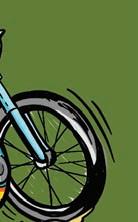
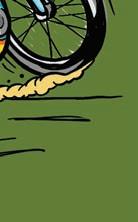

N. Michigan Ave. 10th Floor Chicago, IL 60601
MUSIC










helping out with vocal arrangements for Curran’s solo project, Man Without a Head. “Glenn brought up the idea,” Nnamdï recalls. “He said, ‘I think you have a community of people that support you in a way that I haven’t seen before. I think we should start a label.’”
changed. “I realized that withholding information is a form of lying,” he says. “If people are asking about you because you seem off, it’s really not fair to just say ‘I’m fine,’ which is literally what I always did. It was completely second nature to me.”
BIT.LY/GOOSEDELIVERS




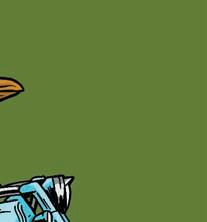

Nnamdï was reluctant at first—he’s already made two failed attempts at starting a label—but the quality of the music coming from that community soon pushed him off the fence. “This shit is undeniably good—it’s not even a matter of opinion for me,” he says. “Everyone around us is killing it and making interesting music, and people should hear it.” In July 2018, the two founders brought aboard a third owner, eclectic hip-hop artist Sen Morimoto, who’d met Nnamdï while playing at Rich Jones’s All Smiles series at Tonic Room in summer 2015. The Sooper catalog includes records by Kaina, Wrong Numbers, Miranda Winters of Melkbelly, and all three owners.
When Sooper and Father/Daughter released Drool in April 2017, it was the climactic moment Nnamdï had been ceaselessly working toward. When the album took off, he was able to quit the odds-and-ends job he’d been working at Curran’s law firm. But even as he continued to innovate musically, build community, and inspire people around him, he was starting to feel like his e orts were pointless.
To support Drool , Nnamdï toured as an opening act for Do Make Say Think, Vagabon, and Speedy Ortiz. During the same period, he hit the road drumming for Monobody, Ratboys, and Mother Evergreen. The trouble he had reintegrating when he was home was driving a wedge between him and the rest of the world, especially those closest to him. “It’s a weird time when you come back from a tour, especially if you don’t have any other work,” he says. “I thought, ‘Well, I’ve got to make my own schedule.’”
That schedule kept Nnamdï in his studio for long hours. He worked himself into a deep rut, and without realizing it, he came to rely on music as his only outlet for emotional expression.
“I used to not tell anyone what I was going through. I would write songs and say, ‘That’s it, it’s in the song,’” he says. “I don’t like telling people how I feel. I don’t want to bring anyone down—if I’m down or depressed, I would put it into a song and let that be the outlet, rather than have to burden people with these things.”
As Nnamdï came to understand what he wanted to do with Brat, though, his attitude
With the Brat song “It’s OK,” he speaks directly and tenderly to these old emotions. “There’s no need to pretend / You’re OK if you’re not,” he sings to himself and to everyone. He’s made a leap forward from the Nnamdï on “Sit Tight,” who tried to keep up a facade of being unbothered by bullies even as he created an imaginary hideout for himself.


“I think it’s important to me as a Black male to show openness and to show all the di erent aspects, show that I get angry and that I can use that anger in a positive way, show that I do get sad,” Nnamdï says. “Because Black males are mostly shown as these intense figures that are very one-sided, which is not true. I think it’s important for younger Black kids to see older Black folks that are being vulnerable and also confident in themselves.”
An earlier song on Brat—one of the “things are not so good” songs—is “Perfect in My Mind,” where falsetto vocals and caterwauling guitar feedback evoke the disappointment that’s baked into the creative process. It’s about learning how to live with the fact that your art never lives up to the vision of it in your head. “Glass Casket” is a dreamscape shaped by dissatisfaction, filled with wishes for all the things Nnamdï could be: a farmer to feed his loved ones, for instance, or an astronaut to take them far away from the fucked-up world.









But by the album’s closer, “Salut,” Nnamdï seems centered, grounded, and at peace with himself. It’s as though he’s finally accepted that he really can inspire people and bring them together, and he’s prepared to take that power seriously. He’s found his faith, and it’s not in a distant God: “If it’s meant to be, then it will be,” he repeats. “Salute to my lord, silent and above he remains.”
Everything about Nnamdï’s process in making Brat is interwoven with his desire to be a better person. Some part of him may think he’s acting like a spoiled child by using his art to fix his life, but his e orts will benefit anyone who listens. “If there was a younger me looking at me,” he says, “I would want him to think, ‘I’m learning things from this person, and I feel comfortable enough to be myself because of this person.’”


28 CHICAGO READER - APRIL 16, 2020 ll
v @betteryetpod
continued from 27
312.938.2000
205
www.summitchicago.com
PJ Gordon, 24, has been involved in Chicago’s hip-hop scene since his senior year at Whitney Young Magnet High School in 2014. He contributes to Fake Shore Drive, organizes concerts, and works as a curator for streaming service Audiomack—he makes its playlist Hometown Heroes: Chicago.
Iwas graduating high school and wasn’t too sure what I was gonna do next. Two of my best friends were starting a rap group. They needed help e-mailing blogs and coming up with a rollout and a marketing plan, so I started helping them out. Basically I became their manager. This is May of 2014. I got into putting on shows and doing rap journalism, and from there it all snowballed.
A few of the local guys went to Whitney
Young—Vic Mensa, Alex Wiley, I believe Joey Purp. I would see them around. The music scene was such a big part of high school, ’cause all of those guys, they were about my age. They would be at the parties, or they were the center of the parties, or they threw the parties. If you were a kid that went to a high school in the city at that point, you knew who they were, and so by extension you were at least a little into the music scene.
I started seeing how the sausage was made. I saw more of it from the inside. I was obviously still a fan, but just seeing the behind-the-scenes stu , it changed my perception of it. I started thinking of it more business-like. Andrew Barber, who hired me at Fake Shore Drive, he was a really big part of helping me get to the next level, but also kind of seeing things from every
angle. He looks at it as a fan, but also the business elements—looking at the way musicians moved and the way their teams were operating.
My cousin was a friend of Hebru Brantley’s, and they’re both friends with Andrew, so they introduced me to Andrew. After I’d been writing for a number of local blogs for a little while, they pretty much just saw, “He’s serious about this.” So my cousin reached out to Drew, like, “Hey, check him out.” And he liked my writing. So it went from there.
I went from a guy that was trying to get a bunch of people to listen to my artist, to a bunch of artists reaching out to me to either submit their music or just in general. I was someone from Fake Shore that they could talk to a little bit easier, because I was more likely to be at an event, because I was still trying to network everywhere. So it introduced me to a lot more people and taught me how to operate in the peer group of the music scene.
I started working at not just doing small community theaters—I went to bars and I threw stu there. I helped book stu at Metro. I was widening my network and keeping my ears to the ground. I went from just trying to get as many people on, to tailoring my events—I hate shows that are just all over the place, like, music that doesn’t really go together. I put more e ort into making it so, like, “Hey, this is a show where I want to see everybody performing. I’m not just here to see my friend, or I’m not just here to see one person. I want to stay for the entire thing.” It’s how I got into playlisting. It’s a full experience, a full something for people to enjoy.
Working for a music blog is in some way curatorial. But I have a pinned tweet on my page that says, “‘I fucked someone to that playlist you made’ is the highest compliment you can give me.” And Audiomack marketing director Joe Vango saw it; I guess he checked the comments to see if it was valid, and he really liked my work. He hired me to do Chicago playlisting for Audiomack—I think it was early 2019.
I make sure that as many artists as possible get signed up for Audiomack—not just Chicago. When I go to other cities, I talk to people and see if they’re with us. I maintain the Chicago Hometown Heroes playlist. I curate other ones, whatever I’m feeling. When Juice Wrld died, I made one to commemorate him.
In general, I was surprised by how few artists knew about Audiomack, or they thought that it was something that they had to pay for, or they didn’t realize, “Hey, we’re just here to make sure your music gets out and you get paid for
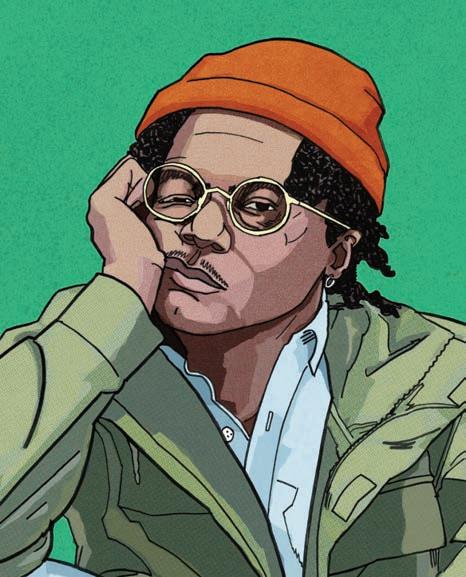
it.” For my part, I’ve been educating as many people about it and just making sure everyone uploads all their new material there. I realized it was kind of a case-by-case basis, where people would upload to Audiomack, so I kind of just made it happen where every time a friend of mine released a song, “Hey, make sure you put this up there.”
We also had the Hometown Heroes concert at Metro for All-Star Weekend, which is more or less the live version of the playlist I curate. That was a big part of the Chicago engagement. It was really cool that we got to be a part of All-Star Weekend; I’m glad they saw that opportunity.
I just like learning as much as I can and seeing things from as many angles as I can. I work for the local operation, which is Fake Shore, and Audiomack is more of a national thing. I’m meeting new artists all the time; I’m meeting new managers. I feel like every interaction I have makes me a little bit better at my job. v
APRIL 16, 2020 - CHICAGO READER 29
PJ Gordon DANIEL ZALKUS
@imLeor
CHICAGOANS
OF NOTE PJ Gordon, hip-hop promoter, curator, and writer “I have a pinned tweet on my page that says, ‘“I fucked someone to that playlist you made” is the highest compliment you can give me.’” As told to LEOR GALIL MUSIC Rattleback RECORDS ANDERSONVILLE'S FULL SERVICE RECORD STORE WE WANT TO WISH YOU ALL HEALTH & PEACE DURING THESE CHALLENGING TIMES WHILE OUR SHOP IS TEMPORARILY CLOSED WE’RE HAPPY TO SHIP YOU ANY MUSIC YOU’RE LOOKING FOR! www.rattlebackrecords.com
Legendary Chicago experimentalists Ono confront centuries of race-based violence on the transformative Red Summer
onous sound collage that’s in turn superseded by a jazzy melody, complete with moody electric-piano licks and an evocative sax solo—and just as quickly, this noir–ish street scene dissipates into the noise of a creaky door blowing open in the wind. Sometimes Ono are so sonically interesting that you can miss just how intense their lyrics are, but that’s not the case on “26 June 1919,” which refers to the gruesome lynching of John Hartfield in Mississippi, which was advertised in local newspapers and drew a mob of more than 10,000 witnesses. Album single “Tar Baby,” a regular part of Ono’s set, is a modern psychedelic classic, with its ominous strings, vocal chants, wild distortion, pulsing Can-like grooves, Stooges-style one-finger piano, and overarching spiral of backward-guitar madness.
I COULD WRITE A NOVEL ABOUT ONO. This Chicago avant-garde group are one of the great bands, and their story is endlessly fascinating. Few groups that had their heyday in the 80s have come back in the late aughts sounding completely rejuvenated and vital. Most important, they’ve continued to progress, honing their wild experimentation into incendiary, out-of-this-world performances and recordings. Like all great sonic art, their work isn’t just entertainment meant for toe-tapping. In fact, 74-year-old lead singer/whirlwind Travis will tell you he’s not much of a fan of mere “music” at all.
Starting with the very first, 1983’s Machines That Kill People , Ono’s records have always been journeys with the power to transform the listener in real time. Such is the case with their latest album, the hyperdetailed Red Summer (American Dreams), which includes several pieces they’ve been performing live in recent years. It’s a concept record that confronts ongoing race-based violence in the U.S., and it shares its title with a monthslong stretch of 1919 marked by anti-Black whitesupremacist terrorist attacks in dozens of cities across the country, including an epicenter in Chicago. The story starts to unfold with opening track “20th August 1619,” which refers to the date that
African slaves were fi rst brought to North America at the colony of Jamestown; something resembling carnival music slowly fades in, its jaunty bells almost soothing, but within two minutes everything swirls into unsettling, uber-processed oblivion. “Coon” exemplifies the classic Ono sound: it kicks off with samples (this time voices, hand drums, and woodwinds), and then Travis’s wildly delayed vocals echo through the void, heralding a sudden turn into dense industrial riffage that mixes white noise, sputtering drum machines, and skronky sax. Funky live drums permeate the anthemic “I Dream of Sodomy,” whose inside-out new wave could be a hit in an alternate universe.
Perhaps the best thing about Ono is their unpredictability; like life or a good thriller, you never know where they might go next. “Scab” starts off with an old-school Severed Heads-type beat that tapers into spoken word over a bleak soundscape,
then an actually catchy melody line saunters in, accompanied by tinkling Speak & Spelllike sounds. “Sniper” conjures Screamin’ Jay Hawkins via Throbbing Gristle darkness, serving up a lesson about Woodrow Wilson’s legacy of racism and his impact on the Red Summer. Underneath the

drums slowly open

“Syphilis” features seldom-heard Ono member Rebecca on vocals, and bandleader P. Michael undergirds its pedal-steel guitar and Suicide-type grind with monstrously funky bass. The song takes a broad look at the titular sexually transmitted infection and the compounding issues of race, sex, gender, and colonialism that surround its history in the U.S.; these aren’t topics that many bands could tackle, and the song feels even more relevant in light of the disproportionate impact COVID-19 is having on Black Americans. Ono close Red Summer with the transcendent live staple “Sycamore Trees,” which comes in with lapping waves of ambient sound and builds to towering operatic heights, with Travis’s deep, gospel-tinged baritone ringing from the mountaintops. Trust me: After this challenging but rewarding album journey, you’ll never be quite the same. Red Summer isn’t merely a collection of songs but rather an urgent document that addresses the past, present, and future—a work of art that penetrates the core of the human condition.
—STEVE KRAKOW

Adamn Killa, Hit the Adamn Self-released soundcloud.com/adam47/sets/hit-the-adamn-1
On March 11, prolifi c Chicago rapper Adamn Killa debuted a new dance on Triller that he calls “Hit the Adamn,” performing it to a sample of his new song of the same name. In the clip, Adamn cocks his arm at a 90-degree angle and leans his shoulder to one side, then makes sharp crouching movements in response to the track’s thundering, minimal bass—it’s simple enough, but the connection of the song to the dance is so unpredictable that I can’t imagine anybody actually learning it. Lots of local rappers with untraditional approaches to the genre have emerged in the past fi ve years or so, but Adamn knows better than most how to embrace the whimsy in his style without undermining his workmanlike dedication to the cra of hiphop. On his recent self-released EP, also called Hit the Adamn, he half-whispers through raps about
30 CHICAGO READER - APRIL 16, 2020 ll
ONO, RED SUMMER American Dreams ono1980.bandcamp.com/album/red-summer
PICK OF THE WEEK
Recommended and notable releases and critics’ insights for the week of April 16 MUSIC
DAVID MAGDZIARZ
but
lyrics, textural
up into a cacophin partnership with to add your event to TIXREADER.COM, email mroeder@chicagoreader.com APR. 19 Cheers with Beers Cupcake Class @ District Brew YardsSUN APR. 16 Late Night 5 @ The Lincoln LodgeTHU APR. 17 Late Night 5 @ The Lincoln LodgeFRI APR. 20 Monday Night Munchies: A 420 Comedy Show @ North Bar MON APR. 25 Stir Crazy: The art of the stirred cocktail @ Online, Make & MuddleSAT MAY 9 Head Talks with Shane Mauss & Sophia Rokhlin @ Laugh Factory SAT MAY 9 Marcella Arguello - Early Show @ North BarSAT MAY 9 Marcella Arguello - Late Show @ North BarSAT APR. 19 Sourdough for Beginners (In Support of Lakeview Pantry) @ Online, Baker Bettie, LLC SUN MAY 2 Shake it Up: The art of the shaken cocktail @ Online, Make & MuddleSAT MAY 9 Porch Pounders cocktail class @ Online, Make & MuddleSAT MAY 16 Summer Slushies: Frozen boozy slushies @ Online, Make & MuddleSAT
his place in the world of hip-hop, his flow teetering on the edge of the beat—but even when Adamn sounds like he’s tripping over himself, he never loses his footing. Wild affectations rub up against dry detachment in his delivery, creating a strange but magical friction. He releases music frequently enough ( Hit the Adamn follows up February’s Life of Whodeywant ) that he can quickly pivot to respond to the news, and on the new EP he uses “Wash My Hands” to address everybody’s least favorite new virus. It’s one of several songs on Hit the Adamn with hooks as catchy as jingles, and some of their instrumentals evoke nursery rhymes too (on “Throw in the Towel,” producer the Legendary Fya Man interpolates “Mary Had a Little Lamb”). This makes them perfect for replaying in your head to make sure you keep scrubbing long enough.
—LEOR GALIL
Friend/Enemy, HIH NO/ON Joyful Noise


joanofarc.bandcamp.com/album/hih-no-on
DJ Hank, Traffic Control Sophomore Lounge djhank.bandcamp.com/album/traffic-control
On the title track of DJ Hank’s debut 12-inch, Traffic Control (Sophomore Lounge), car alarms bleat atop thickets of overactive drums, occasional blownout hi-hats, hiccuping bass, and a tasteful array of hand claps. At first listen, “Traffic Control” might rattle you just like a real-life car alarm, but thankfully Hank understands how to rearrange anxietyinducing electronic screams into joyous blasts. A North Carolina native, he’s lived in Chicago for nearly a decade, paying his bills as a bike messenger while ingraining himself in the city’s footwork scene. He’s tight with many members of foundational footwork collective Teklife (for example, he contributed to Boylan’s September EP, Renegade), and though he’s not a member himself, he’s clearly learned from Teklife how to flit between pop ecstasy and battle-centric percussive arrhythmia.
On Traffi c Control , Hank colors a broad palette of dance styles with a blur of everyday street-transit blare, often rendering even the harshest sounds into smooth, glistening melodies while retaining the bite of his hard-hitting percussion. The album’s diversity of genres skews toward footwork, and the energy and noise in these frenetic tracks evoke the rush of zooming through the dense heart of the city on a bike, dodging pedestrians and threading the needle between cars and buses. In Hank’s music, the bustle doesn’t slow you down—it energizes you.
—LEOR GALIL
—LEOR GALIL

Immediately after the 2016 presidential election, Tim Kinsella and a coterie of collaborators gathered at Chicago’s Minbal studios to work through their feelings about America’s new nightmare. It took them two days to record an album of solemn, fretful indie rock, and then it took them more than three years to release it. HIH NO/ON (Joyful Noise) came out late last month under the name Friend/ Enemy, which Kinsella and HIH NO/ON synth player Todd Mattei used for 2002’s Ten Songs. Kinsella juggles a lot of projects, which partly explains the gap between the session and the release. In the intervening years, he’s released two Joan of Arc albums (2017’s He’s Got the Whole This Land Is Your Land in His Hands and 2018’s 1984), reunited Cap’n Jazz again for a spate of 2017 shows, published a novel (last year’s Sunshine on an Open Tomb ), and formed postindustrial duo Good Fuck with Jenny Pulse of Spa Moans (they’ve released two albums and an EP so far). Kinsella and Pulse, who are recently married, moved to Italy in mid-January, and in early March they boarded the last plane out of the country as it shut down due to the coronavirus pandemic. Before they le , they’d both gotten sick—possibly with COVID-19—and recovered. HIH NO/ON arrived a few weeks a er they got back to the U.S. The fears that Kinsella, Pulse, and the collective express on the album gain horrifying new dimensions from the suffering unfolding here due to the Trump administration’s denial, lying, bullying, and profiteering. Kinsella and Pulse half-sing about everyday fascism and creeping totalitarianism, their sparse lyrics and dehydrated duets evoking dread, helplessness, and grief. The rest of the ensemble—Mattei, pianist Jamey Robinson, guitarist Bill Mac Kay, Sam Wagster and Skyler Rowe of Mute Duo, and Kinsella’s younger cousin Nate from American Football—supports the vocals with looping melodies that gallop and drone. Kinsella has written that HIH NO/ON is his answer to his musicbusiness pals who’ve long pushed him to try making a “simple ‘guitar rock’ record,” which is to say that these skewed jams are as straightforward as he can get, outlining the surreal and disastrous present through the curtain of a fugue state.
Sharp songwriting and bombastic delivery have made King Von one of fastest-rising stars in drill, the pummeling hip-hop subgenre born in Chicago. Born Dayvon Bennett, the 25-year-old rapper grew up in Englewood, and he’s been filling his verses with crime-fiction narratives at least since his breakout single, 2018’s “Crazy Story.” As he told Genius in a video this spring, he draws on urban novels and on his own experiences for his lyrics—his history of legal trouble includes arrests for firearm possession and attempted murder (he was acquitted of the latter a er spending three and a half years in Cook County Jail). Von’s said he’s used his time while incarcerated (including a recent house arrest in Atlanta for a pending case involving Only the Family label boss and codefendant Lil Durk) to refi ne his street-rap storytelling. On “Took Her to the O,” a single from the new Levon James , Von plans to bring a date to O Block, the notoriously violent stretch of South King Drive (which Von compared to “a mini resort” in that Genius video because of the fun he’d have with his friends there). He’s waiting in his car outside her house, having doubled back to let her pick up her purse, when a stranger shows up and the confrontation spirals into a shooting. The date is unfazed, since the victim is from a different block, and Von drives off impressed. Von wrote the song a cappella while in jail, and producer Chopsquad structured the instrumental around it, a reversal of Von’s usual process. Levon James expands on the sonic palette of Von’s 2019 fulllength debut, Grandson Vol. 1, which stays close to
APRIL 16, 2020 - CHICAGO READER 31
King Von, Levon James Only the Family / Empire empire.lnk.to/LevonJames
MUSIC
the classic drill sound, combining blown-out beats with blunt-force effects. The beat for “Block,” by superproducer Mike Will Made-It, pairs trap 808s with chimes that cut to the bone like winter wind. The synths on the G Herbo collaboration “On Yo Ass” sound like the ghosts from Super Mario 64 are chasing Von, only to turn invisible when he turns to face them—but the boom in his boasts makes it clear they won’t catch him. —JACK RIEDY
Midwife, Forever The Flenser midwifemusic.com/album/forever
In December 2016, a fi re ripped through Oakland arts space Ghost Ship, killing 36 residents and guests who were attending an underground electronic show. As the tragedy was picked up by mainstream media, misinformation and misrepresentation of DIY artists and venues resulted in a backlash felt across the country. Shortly a er the fi re, the Denver music community was hit hard when arts hub Rhinoceropolis was shut down without warning, displacing its occupants to face the high rents and gentrification that already threatened the city’s creative scene. Among them were multiinstrumentalist Madeline Johnston, who makes slow-burning dream pop as Midwife, and her close friend Colin Ward. A little more than a year later, Ward took his own life, and Midwife’s new second album, Forever, is dedicated to his memory. Over the mournful, atmospheric guitar of opening track “2018,” Johnston conjures the surreal feelings that can come when tragedy strikes hard and fast. The fuzzed-out, hook-driven “Anyone Can Play Guitar” and “S.W.I.M.” wouldn’t sound out of place on the soundtrack of a 90s indie flick, but underneath their relaxed, summery vibes, they’re both poignant confessionals about inner struggle and saying goodbye. “C.R.F.W.” starts with several minutes of spoken-word poetry recorded by Ward, after which Johnston emerges with a shimmering, ambient instrumental. Everyone is missing someone, and plenty of us are grieving—and those personal voids


can feel even more overwhelming during these times of physical isolation. So while Forever focuses on one community and a special relationship between two friends, its intimate revelations can resonate with anyone. —JAMIE LUDWIG
Oranssi Pazuzu, Mestarin Kynsi Nuclear Blast
oranssipazuzu.bandcamp.com
When I wrote about these Finnish xenonauts last October, on the occasion of the only stateside tour in their 13-year history, I called their music “wormhole black metal”: “Oranssi Pazuzu plunge you into a tunnel of fatally deformed spacetime, bathe you in a sizzling cocktail of exotic radiation, and spit you out somewhere cold, dark, alien, and very, very far away.” I stand by the wormhole metaphor, but the band’s brand-new fifth album, Mestarin Kynsi (“The Master’s Claw”), has me rethinking the “black metal” part. Over the years they’ve drifted so far from the genre’s familiar signposts that wherever they are now, they’re alone out there—and I can’t ask for more from musicians than that they grow to sound like no one but themselves. You’ll waste your time hunting for frosty tremolo-picked guitars, blurry blastbeats, and sandpaper shrieks on Mestarin Kynsi. The clotted vocals of guitarist and front man Juho “Jun-His” Vanhanen admittedly signal “some sort of metal is happening, probably,” but the album is dominated by turgid, peristaltic bass and a kaleidoscopic constellation of keyboards. Increasingly, Oranssi Pazuzu don’t have a sound so much as a psychedelic profusion of sounds: insistent oscillations of cosmic roller-rink organ, smears of dissonant hornlike synths, a violin ostinato that wobbles like a dragging reel-to-reel tape, pinging rhythmic chatter reminiscent of late-80s EBM, cascades of urgently pulsing wordless female vocals, a grotty guitar that dives in pitch like a circular saw biting into sheet metal. Only one track on Mestarin Kynsi uses a steady rock backbeat, and the lone recognizable blastbeat arrives in album closer “Taivaan Portti”: the drums hammer steadily forward, gradually overwhelmed by an insane ecsta-
32 CHICAGO READER - APRIL 16, 2020 ll
Midwife KATIE LANGLEY
continued from 31 MUSIC Find more music reviews at chicagoreader.com/soundboardStay Home. Stay Positive. Stay Connected. oldtownschool.org We can’t wait to get back to making music and dancing together at the Old Town School! In the meantime, many of our classes are currently running online, and we are actively working on more ways to keep you making music and learning new things with us, from home, in the near future. We are so thankful to be part of the wonderful and supportive arts community in Chicago and are especially thankful for all our dedicated students and teaching artists persevering with us during this time. For updates, rescheduled concert info, ways to help support our staff & more please visit oldtownschool.org/alert Stay safe, sane, and keep on playing from all of us at Old Town School of Folk Music!
sy of cathedral-size drones that grows and grows until its howling overtones pour from the heavens like curtains of fire. The songs complicate riffs that might otherwise be catchy by dilating them with unpredictable extra beats or adding competing patterns—these guys will give you something awesomely heavy to dig into, but only so they can use that hook to drag you somewhere weird. “Ilmestys” begins with oozing synth bass and a kick drum that feels like it’s pressed up against your forehead, chased by a whirling disco-ball keyboard that staggers dizzily through the lopsided ten-beat bars— meanwhile, the sparse vocals stubbornly ignore that odd meter, suspending the oscillating patterns in a sort of infinite moment where everything feels like it could be flowing backward or forward. When the full drum kit finally enters, it brings along a dilated bass riff that finally pushes the song in a clear direction, triggering an explosively satisfying release of that tension. In English, “Ilmestys” means “Revelation.” —PHILIP MONTORO
cadillacturns.bandcamp.com/album/june-holiday

Like many other participants in Chicago’s contemporary jazz scene, drummer Charles Rumback is both a sideman and a leader. Whether backing singer-songwriters such as Steve Dawson and Angela James, playing space-bound Americana with guitarist Ryley Walker, swinging behind jazz saxophonist Dustin Laurenzi, or leading this trio with bassist John Tate and pianist Jim Baker, he sustains momentum and adds atmospheric accents without hogging the spotlight. The three pieces that he wrote for June Holiday, the trio’s third album, invite the listener to appreciate his accompanists’ strengths. While Rumback restricts himself to subtle accents on his tune “Here & Now,” Tate fluently articulates the piece’s dynamic shi s and harmonic framework; the molasses pace of “Burning Daylight” seems tailormade to showcase Baker’s ruminative method of working through a ballad’s improvisational potential. Baker, who spends most of his time working in totally free settings these days, contributes three compositions as well, and their fleetly stated, elegantly constructed melodies showcase Rumback’s light but propulsive touch when playing at quicker tempos. Tate only brings one tune, “Hard Goodbye,” but the way that he and Baker exchange melancholy phrases over Rumback’s rustling brushwork makes it the album’s emotional center of gravity. Drummers are o en evaluated by how good they make the rest of the group sound; part of Rumback’s genius as a bandleader is that in the group he’s put together, everyone has everyone else’s back.
—BILL MEYER
Waxahatchee, Saint Cloud
Merge waxahatchee.bandcamp.com/album/saint-cloud-2
Katie Crutchfield has taken a huge step forward. The sound of her new album, Saint Cloud (Merge), her fi h under the Waxahatchee name, is a far cry from the ragged glory of her previous records, trading in bombast for slick, streamlined introspection. Crutchfield started Waxahatchee as an acous-

MUSIC










tic solo project shortly a er the dissolution of her previous band, P.S. Eliot (which also featured her twin Allison, later of the band Swearin’). The fractured, confessional bedroom emo on her debut as Waxahatchee, American Weekend, remains one of the saddest, most beautiful collections of heart-onthe-sleeve songs ever put to tape. By the release of 2013’s Cerulean Salt, Waxahatchee had grown to a full band, and while the music was louder this time around, it still felt raw and exposed. With each subsequent album, Crutchfield’s sound grew bigger as her songwriting grew even better. It was an amazing progression to witness. The 2017 record Out in the Storm felt almost as over-the-top as Dinosaur Jr., barreling forward with guitars soaring; even the most heartbreaking numbers conveyed the punk energy and ethos behind the music. That’s why I find myself feeling a bit let down with Saint Cloud Crutchfield can still write a chorus that will bring a tear to your eye, but the sound of the songs feels very safe and quaint. But while the album might not seem as punk as its predecessors, its musical shi s come from a place of positivity and personal growth—Crutchfield recently got sober, and many of her lyrics here explore this change.
—LUCA CIMARUSTI

Wrekmeister Harmonies, We Love to Look at the Carnage


Thrill Jockey
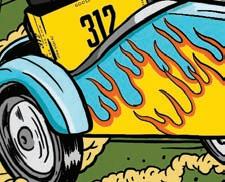







wrekmeisterharmonies.bandcamp.com/album/ we-love-to-look-at-the-carnage
Enigmatic former Chicagoans Wrekmeister Harmonies recorded their seventh full-length, We Love to Look at the Carnage (Thrill Jockey), in a cold, isolated farmhouse in upstate New York with producer Martin Bisi. This time around, the core duo of J.R. Robinson and Esther Shaw added insightful, versatile percussionist Thor Harris (Swans, Shearwater) and confrontational, challenging electronicist Jamie Stewart (Xiu Xiu). Neither of these musicians is a stranger to the travails of laying oneself open in dark and challenging work, which makes them perfect collaborators for an album whose loose concept has to do with the late hours that start well after midnight and end before dawn. We Love to Look at the Carnage is subtler and more restrained than some of Wrekmeister’s heavier records, such as 2016’s Light Falls . On these tracks, Robinson’s voice narrates a struggle against breakdown moment by moment, with clenched-jaw determination (think Nick Cave with more self-control or David Tibet with less). The band create a thick and spiky environment in which to nestle: the way Shaw’s violin and Harris’s percussion adorn the churning riffs of “The Rat Catcher” adds grace to the horror-inducing inevitability of time passing and sweeping people away. The sepulchral windswept echoes of “The Coyotes of Central Park” give a rapt tenderness to a heavy lullaby evoking nature’s reclamation of human spaces. On their Facebook page, Wrekmeister Harmonies describe their sound as “pastoral doom,” and here that’s apt. This album is pastoral in both senses of the word: it’s spacious enough to reflect the peace and the terror of the countryside, and it can also conjure visions of rogue clergy ministering to fl ocks of parishioners whose desperation has sent them in search of salvation.
—MONICA KENDRICK v










APRIL 16, 2020 - CHICAGO READER 33
Charles Rumback with Jim Baker and John Tate, June Holiday Astral Spirits
https://www.gofundme.com/f/chop-shop-virtual-beats-amp-eats BIT.LY/GOOSEDELIVERS
EARLY WARNINGS
Sleep on It 10/16, 7:30 PM, Beat Kitchen, 17+
Sound Stage showcase featuring St. Blvd, Just Logan, Avehre, De’Jauve, Nick Henderson, Chanelle Truvillion 6/16, 7 PM, the Promontory b Splean 12/5, 8 PM, Park West, 18+
Sun Blvd, Richienough, Bonita Appleblunt 6/11, 8 PM, the Promontory Travelin Band 6/26, 8 PM, Beverly Arts Center b Tri Patterns, Ex Okays, Skeet Pete 6/19, 9 PM, Martyrs’ Tony Trischka 10/18, 3 PM, Szold Hall, Old Town School of Folk Music b Duke Tumatoe & the Power Trio, Joanna Connor Blues Band 7/10-7/11, 7 PM, Kingston Mines
Vetiver 8/7, 9 PM, Sleeping Village
NEW
Jhené Aiko, Queen Naija, Ann Marie 6/17, 8 PM, Chicago Theatre b
Balkan Bump, Blue Future, Tomcat Trumpet 5/2, 9 PM, Bourbon on Division Ballroom Thieves, Dead Horses 8/30, 8 PM, Lincoln Hall, 18+
Batu, Hijo Prodigo, Club Politix, JS Alvarez 10/2, 10 PM, Smart Bar
Jason Bieler & Jeff Scott Soto 8/7, 7 PM, Bananna’s Comedy Shack at Reggies’
Birthday Massacre, Julien-K, Bellhead 12/16, 7 PM, Reggies’ Rock Club, 17+
Bölzer, Suffering Hour, Beastlurker 6/26, 8 PM, Bourbon on Division Russell E.L. Butler, Justin Aulis Long, Grey People, Nishkosheh 6/20, 10 PM, Smart Bar
CNCO 6/21, 7 PM, Rosemont Theatre, Rosemont b Combichrist, King 810, Killer Confession 10/22, 6:30 PM, Cubby Bear
Dokken, Lynch Mob 10/24, 7 PM, Genesee Theatre, Waukegan b Ana Everling & the Taraf 5/26, 8 and 10 PM, Jazz Showcase b
Every Shiny Thing: A Tribute to Joni Mitchell with Andrea Bunch 6/12, 8 PM, Maurer Hall, Old Town School of Folk Music b
F.I.L.T.H., Amsedel, Death on Fire, Jury of Fears, Darling Dead 5/30, 7 PM, Live Wire Lounge
Azizi Gibson 12/13, 7 PM, Subterranean b Ike Reilly Assassination, Peter Joly Group 9/19, 8:30 PM,
FitzGerald’s, Berwyn Intocable 9/19, 8 PM, Rosemont Theatre, Rosemont b Jay Electronica 6/26, 9 PM, the Promontory
Jerry Dance Party featuring DJ Jerrbrother 7/24-7/25, 11 PM, Cubby Bear
La Adictiva Banda San Jose de Mesillas 6/27, 8 PM, Rosemont Theatre, Rosemont b LA Priest 11/15, 9:15 PM, Empty Bottle
Jessy Lanza 10/1, 9 PM, Sleeping Village
Last Free Exit to the Inner Soular Sis-tem: a Sun Ra/ Juneteenth Celebration featuring Lisa E. Harris 5/28, 8 PM, the Promontory b Legendary Shack Shakers 9/13, 8 PM, Beat Kitchen
Little Big Town 10/22-10/23, 8 PM, Chicago Theatre b Bob Log III 11/5, 8 PM, Beat Kitchen, on sale Fri 4/17, 10 AM
Stephen Lynch 8/15, 7:30 PM, Park West Mike Mains & the Branches 9/19, 6:30 PM, Cubby Bear Dan Mangan 9/27, 8 PM, Schubas, 18+
Johnny Mathis 12/12, 8 PM, Rosemont Theatre, Rosemont b Mattiel, Liam Kazar 7/22, 9 PM, Sleeping Village
Christian McBride & Inside Straight 5/21-5/23, 8 and 10 PM; 5/24, 4 and 8 PM, Jazz Showcase b
John Mark McMillan 10/16, 7:30 PM, Subterranean, 17+ Moonrunners Music Festival 8/8-8/9, 11 AM, Reggies’ Rock Club
José María Napoleón 9/25, 9 PM, Rosemont Theatre, Rosemont b Natewantstobattle, Vespera, Andrew Stein 9/13, 7 PM,
Lincoln Hall b Negativland 7/26, 8 PM, Schubas, 18+ S. Joel Norman 5/15, 9 PM, Tack Room
Not Our First Goat Rodeo featuring Yo-Yo Ma, Stuart Duncan, Edgar Meyer, Chris Thile, Aoife O’Donovan 8/13, 6:30 PM, Pritzker Pavilion, Millennium Park F b
Off Broadway, Handcuffs 8/22, 8 PM, Reggies’ Rock Club, 17+ Oshun, Mourning A Blkstar 9/30, 8 PM, Schubas, 18+ Papadosio 9/11-9/12, 9 PM, Lincoln Hall, 18+ Graham Parker 4/10/21, 8 PM, Maurer Hall, Old Town School of Folk Music b Christopher Parrish 5/30, 8 PM, Tack Room Pimpinela 10/25, 7 PM, Copernicus Center b Steve Poltz 12/2, 8 PM, SPACE, Evanston A Gregory Porter, Ledisi 6/7, 7 PM, Chicago Theatre b Professor Louie & the Crowmatix 6/2, 9 PM, Rosa’s Lounge Quique Escamilla 6/24, 8:30 PM, Szold Hall, Old Town School of Folk Music F b
A.R. Rahman 6/20, 8 PM, Auditorium Theatre b Rdgldgrn, Little Stranger, 7/23, 7 PM, Cubby Bear Dianne Reeves 6/5, 8 PM, Orchestra Hall, Symphony Center b Carlos Rivera 6/18, 9 PM, Rosemont Theatre, Rosemont b Reginald Robinson 6/17, 8 PM, the Promontory b Rotting Christ, 2/20/21, 6 PM, Reggies’ Rock Club, 17+ Tom Ryan, Dan Holohan Band 6/26, 8 PM, Szold Hall, Old Town School of Folk Music b Scrapomatic 10/22, 8 PM, Martyrs’
Violet Crime 8/15, 9 PM, Martyrs’ Wavves, Sadgirl 11/5, 10 PM, Schubas, 18+ Bob Weir & Wolf Bros 10/20, 7 PM, Chicago Theatre b Westerman 7/28, 9 PM, Sleeping Village
Young Man in a Hurry, Blisters, Yours, Mookie 9/12, 9 PM, Schubas, 18+ Zoofunkyou 12/19, 8:30 PM, Schubas
UPDATED
Note: This is a sampling of the many concerts that have been rescheduled or canceled due to safety concerns regarding the COVID-19 virus. We suggest that you contact your point of purchase for ticket exchange or refund information.
Accidentals 4/22, 8 PM, Chop Shop, canceled Bakar 5/9, 7:30 PM, Bottom Lounge, canceled David Bromberg 9/24, 8 PM, Maurer Hall, Old Town School of Folk Music, rescheduled b Channel Tres 5/21-5/22, 9 PM, Sleeping Village, canceled Louis Cole Big Band 12/9, 8 PM, Chop Shop, rescheduled; tickets purchased for original date will be honored, 18+
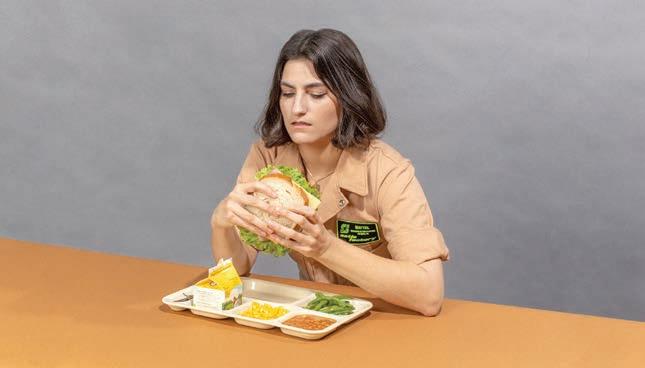
Shawn Colvin, Daphne Willis 1/23/21-1/24/21, 8 PM, SPACE, Evanston, rescheduled b The Dip 9/25, 8 PM, Thalia Hall, rescheduled b Five Finger Death Punch, Papa Roach, I Prevail, Ice Nine Kills 11/5, 6 PM, Allstate Arena, Rosemont, rescheduled b
Fozzy 7/12, 6:45 PM, the Forge, Joliet, venue changed; tickets purchased for Bottom Lounge
will be honored b Robbie Fulks 8/2, 8 PM, SPACE, Evanston, rescheduled b Gi-dle 5/5, 8 PM, House of Blues, postponed until a date to be determined b Goodie Mob 5/8, 9 PM, Bottom Lounge, canceled Hip Abduction 8/22, 8:30 PM, Martyrs’, rescheduled Hockey Dad, Red Pears, Gymshorts 4/22, 8 PM, Subterranean, canceled, 17+ Kuma’s Fest featuring Anthrax, Converge, Russian Circles, Atlas Moth, Indian 8/29, 1 PM, Brands Park, rescheduled b V.V. Lightbody 10/2, 9 PM, Sleeping Village, rescheduled Lone Bellow 10/30, 8 PM, Thalia Hall, rescheduled, 17+ Midwest Live & Loud festival 9/4-9/6, Cobra Lounge, canceled
Minks 8/12, 9:15 PM, Empty Bottle, rescheduled Odyn V Kanoe 5/2, 7:30 PM, Martyrs’, canceled Pigface 7/1, 8:30 PM, Thalia Hall, canceled, 17+ Post Animal, Twen, Woongi 9/24, 8:30 PM, Thalia Hall, rescheduled, 17+ Kim Richey 8/18, 7:30 PM, SPACE, Evanston, rescheduled b
RJD2 8/15, 8:30 PM, Thalia Hall, rescheduled, 17+ Sheer Mag, Young Guv 8/15, 10 PM, Empty Bottle, rescheduled Spag Heddy, Effin 8/8, 9 PM, Concord Music Hall, rescheduled, 18+
Strawberry Girls, Andres, Amarionette, Dwellings 9/18, 7:30 PM, Beat Kitchen, rescheduled, 17+ Swans, Anna Von Hausswolff 2/10/21, 8:30 PM, Thalia Hall, rescheduled, 17+ This Will Destroy You 9/10, 9 PM, Sleeping Village, canceled
Two Feet, Upsahl 8/18, 9 PM, Metro, rescheduled, 18+ Violent Femmes, X 5/30, 8 PM, Radius Chicago, postponed until a date to be determined, 17+
Pabllo Vittar, Tatiana Hazel 10/20, 9 PM, Metro, rescheduled; tickets purchased for original date will be honored, 18+
Volvox, Harry Cross 11/13, 10 PM, Smart Bar, rescheduled
GOSSIP
WOLF
A furry ear to the ground of the local music scene
THE AMBITIOUS 2019 debut of Damon Locks ’s Black Monument Ensemble , Where Future Unfolds , was one of the best Chicago albums not just from the past year but from the past decade. Last week, the collective dropped the single “Stay Beautiful,” recorded live at the Garfield Park Conservatory during Red Bull’s 2018 Chicago festival . Scrappers Film Group made a video using intimate performance footage from that show: it opens with a monologue from Locks, in the voice of a vulnerable patient alone in a hospital who finds solace in an anonymous message of hope, and ends with clips of ensemble members at home with friends and family, thriving during the shelter-inplace order. The song’s message of resilience and mutual support takes on new urgency and power during this pandemic. Gossip Wolf has been thirsty for a fulllength from self-described “bohemian electronics” project Sip , masterminded by Jimmy Lacy from Black Math and Population, ever since the tasty, transcendent Lumpen Radio session Live on Planet CatieO dropped via Eye Vybe Records in late 2018. On Friday, April 24, eternally cool Los Angeles label Not Not Fun finally releases Sip’s studio debut, Leos Naturals . Like Lacy’s gently mind-expanding live sets, tracks such as “Amitabul” bubble with peaceful psychedelic energy—imagine the mellowest moments of Manuel Göttsching’s classic Inventions for Electric Guitar dappled with California sunshine.
Anonymous local darkwave duo None of Your Concern hide their faces behind uncanny faceted metallic masks, which makes figuring out who cra s these propulsive jams some real Scooby-Doo business! Earlier this month, the duo dropped “Cinnamon,” a hurtling comet of bopping EBM that will appear on their debut album, Primer, which arrives Friday, April 24. Their release show at Sleeping Village with Wingtips and Panic Priest has been moved from Friday, May 1, to Friday, October 9. —J.R. NELSON AND LEOR GALIL
Got a tip? Tweet @Gossip_Wolf or e-mail gossipwolf@chicagoreader.com.

34 CHICAGO READER - APRIL 16, 2020 ll
Never miss a show again. Sign up for the newsletter at chicagoreader. com/early
Mattiel JASON TRAVIS
CHICAGO SHOWS YOU SHOULD KNOW ABOUT IN THE WEEKS TO COME b ALL AGES F WOLF BY KEITH HERZIK


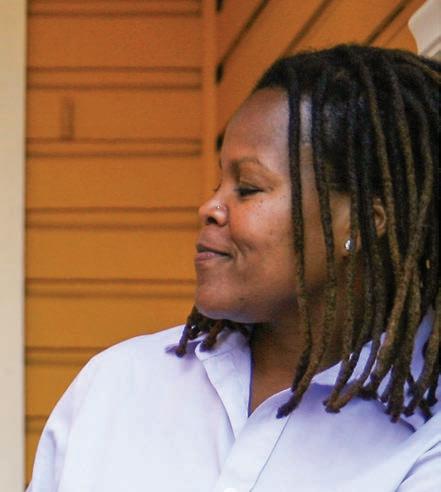

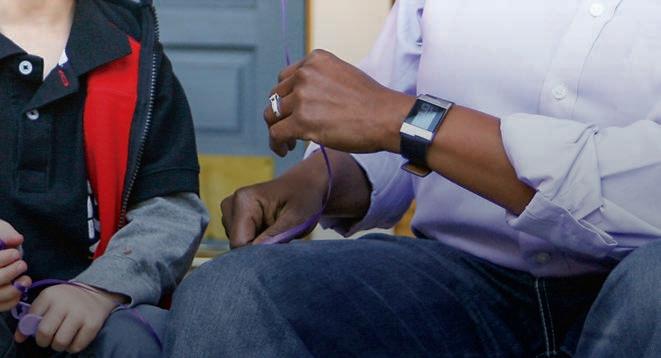

APRIL 16, 2020 - CHICAGO READER 35 BE COUNTED. 2020 CENSUS Your par cipa on matters. Questions about the 2020 Census? We have answers. Text us your questions to 987987. Complete your Census form online: my2020Census.gov
OPINION
SAVAGE LOVE
By DAN SAVAGE
Q: I am a super queerpresenting female who recently accepted that I have desires for men. My partner of two years is bisexual and understands the desires, but has personally dealt with those desires via masturbation while my desires include acting. Her perspective is that the grass is greener where you water it and that my desire to act is immature, selfish, and has an unrealistic end game. What gives when you don’t feel fulfilled sexually in a monogamous relationship?


OPEN OR OVER?
A: Something definitely gives when a person doesn’t feel fulfilled in a monogamous relationship— sometimes it’s an ultimatum that’s given, sometimes it’s a one-time-only hall pass that’s given, sometimes it’s an agreement to open the relationship that’s given. But the relationship sometimes gives, e.g. the relationship collapses under the weight of competing and mutually exclusive needs and desires. If you want to open things up (if allowed) and she wants to keep things closed (no allowance), OOO, it’s ultimately your willpower— your commitment to honoring the commitment you’ve made—that’s likely to give.
Q: I have a close friend who’s cheating on her girlfriend. It has been going on for over a year. At first I actually supported the exploration because my friend has a really
unsupportive girlfriend who has done really crappy things to her over the course of their relationship. I kept pushing for her to make a decision and use this affair as a way for her to free herself, but she is just coasting along with her girlfriend and her lover. She’s under a lot of stress and she’s turned into a major liar and it’s creeping me out. I’m considering either telling her girlfriend myself (though I promised my friend I wouldn’t) or maybe I just need to end this friendship. My friend’s double life upsets me. It’s just been going on too long. —IS MY FRIEND AN ASSHOLE?
A: If your friend—the one leading the double life—is asking you to run interference for her, if she’s asking you to lie to her girlfriend, or if she’s asked you to compromise your integrity in some way, she’s an asshole and you’re a sap; tell your friend you’re done covering for her and that you won’t be able to see her again until the deceit or the pandemic is over, whichever comes first. If the issue is your friend expects you to ooze sympathy while she goes on and on about the mess she’s made of her life, IMFAA, simply refuse to discuss the mess that is her love life with her. Remind her that she already knows what you think she needs to do— she needs to break the fuck up with her shitty girlfriend— and then change the subject.
Q: I’m a cis het woman who
loves men and loves dicks. I love dicks so much that I fantasize about having one. Nothing brings me to orgasm more quickly or reliably than closing my eyes and imagining my own dick, or imagining myself as my partner, and what they’re feeling through their dick. I love being a woman, and I’m afraid to bring this up with any partner(s) of mine. Is this super weird? Am I secretly trans somehow?
Am I overthinking this? —
PERFECT MINUS PENIS
A: It’s not that weird, some people are trans and you could be one of them (but fantasizing about having a dick ≠ being a male), and you’re overthinking what you should be enjoying. Buy a strap-on, tell your partners about your fantasies, and enjoy having the dick you can have.
Q: I wonder if you might be able to put a label on this sex act: It has to do with overstimulation, in this case of a penis (mine). A er receiving a wonderful hand job, the giver kept stroking me purposefully. My penis was in a heightened, supersensitive state. It was almost like being tickled, if you’re ticklish. I was being forcefully held down (consensually), and just as I thought I couldn’t take it anymore, I had a second amazing orgasm. I didn’t ejaculate again, it was more of a body orgasm. It came in waves and everything was warm. It was mindblowing, spiritual, galactic, unique, and very similar
36 CHICAGO READER - APRIL 16, 2020 ll
This isn’t some underground kink thing Apple-polishing, trouble swallowing, and a so return to “normal.”
OPINION
to how I’ve heard women describe their orgasms. Ever hear of anything like this? Is this some sort of Japanese underground kink thing? —WITTY HILARIOUS OVERZEALOUS AMATEUR
A: The act you’re describing already has a name, WHOA, and an entry on Urban Dictionary: applepolishing. Most men find the sensation of having the head of their cock worked so overwhelming that their bodies involuntarily recoil, which makes it difficult to polish someone’s apple if the “victim” isn’t restrained in some way. But it’s not painful—it’s like being tickled; indeed, the victim usually reacts with desperate laughter and gasping pleas for it to stop. (Don’t ask me how I know.) That allover feeling of euphoria you experienced when your apple got polished was most likely a wave of endorphins— like a runner who pushes herself past her physical limits and experiences a full-body “runner’s high,” you were pushed past your physical limits, WHOA, and experienced the same sort of high.
Q: I’m a 35-year-old straight guy. I recently started seeing an amazing 34-yearold girl. We love being around each other, but
during sex, neither of us can come. It’s infuriating, to say the least. She has no trouble when she masturbates and I know I have no trouble when I masturbate, so why can’t we come together? —CAN’T
UNDERSTAND MATTER
A: If you can come when you masturbate and she can come when she masturbates, CUM, masturbate together and you’ll be coming together. Mutual masturbation isn’t a sad consolation prize— mutual masturbation is sex and it can be great sex. And the more o en you come together through mutual masturbation, the likelier it gets that you’ll be able to come together while enjoying other things.
Q: I have a weird and terrible problem. I’ve been seeing someone new, and have just discovered that I get diarrhea every time I swallow his come. Like debilitating pee poops an hour a er, every time. I know the solution to the problem would be to stop swallowing, but I was wondering if you had ever heard of this before or knew why this was. —MY SAD ASSHOLE
A: I have heard of this before, MSA, and superstar Savage Love guest expert
Dr. Debby Herbenick unpacked the cause for another reader a few years back: “Prostaglandins are substances made by the body and that the body is sensitive to. Semen contains prostaglandins—and prostaglandins can have a laxative effect on people. Related: If you’ve ever felt a little loosey-goosey right before getting your period, that’s also thanks to prostaglandins (which spike just before your period, because the prostaglandins get the uterine muscles to contract, which then helps to shed the lining of the uterus, resulting in a menstrual period). So why don’t more semen swallowers find themselves running to the bathroom post blow job?
I don’t know why most people aren’t extra-sensitive to prostaglandins, but fortunately most of us aren’t, or there would probably be a lot less swallowing in the world.”
So, MSA, you’ll have to stop swallowing your boyfriend’s come or only swallow when you have immediate access to a toilet in a restroom with a powerful fan. v
Send letters to mail@ savagelove.net. Download the Savage Lovecast at savagelovecast.com.

@fakedansavage
Do Not Touch Puzzle
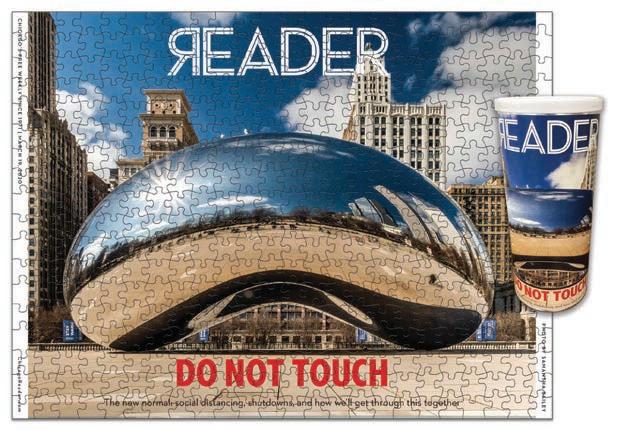
APRIL 16, 2020 - CHICAGO READER 37
Piece together the first of our iconic Stay Home cover series. This is a 432-piece, 18” x 24” puzzle. The cost of this puzzle is $60 + $10 for shipping. (U.S. orders only) Chicago Reader chicagoreader.com/puzzle pleaserecyclethispaper
CLASSIFIEDS
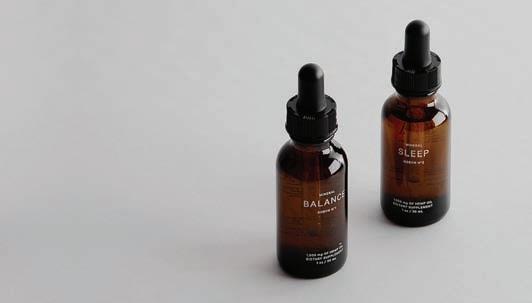

JOBS GENERAL
Head of Technology –(job location is Morton Grove, IL) – Develop company strategy for customer & internally facing innovation & technology. Advise CEO & senior management team on evolving the company into one which presents technology as its differentiator. Lead the Development team in building leading-edge, API driven interfaces. Lead the Analytics team in providing nextgeneration analytics dashboards & customer insight. Acquire partnership & negotiate contracts w/ key technology providers. Educate accounts teams in strategic & tactical technology sales methodology & approaches specific to technology & in particular cloud-based SaaS & PaaS systems. Provide analysis & business case proposals to enterprise clients, & assist them in developing new technology service offerings & go-tomarket strategy. Req’s: Bachelor’s degree in Computer Science plus five yrs of postBachelor’s progressive exp in the position offered or as CEO of software company. Three yrs of the req’d exp must have included using C++, C#, Javascript, Node.js, .NET, Python, MS SQL Server, Oracle, MySQL, Linux based SoC, microcontrollers, FPGA devices, LCD & LED driver board systems, Azure, AWS, MS Project, & Salesforce; using OpenCV to perform object & facial analysis; negotiating contracts & budgets; & identifying & establishing partnerships w/ technology providers. Mail resume to: Keelie Fallon, Integrated Merchandising Solutions, LLC, 8338 Austin Avenue, Morton Grove, IL 60053.

Office cleaning four days a week. 2.5/3 hours/day. Blue Island, Villa Park, Elmwood Park, South Archer Ave Chicago. Please call 847-869-7331.
Financial Development Analyst (Chicago, IL) - Monitor, analyze & evaluate current & historical financial data to forecast


future yield, stability, investment risk trends & economic conditions for investments in new markets & corporate expansion initiatives; Analyze trends to forecast fluctuations in market growth & commercial viability; Prep financial reports on investment opptys based on projected growth & market demand, while identifying pot’l risks for various areas of operation; Analyze sales & market reports to create models that formulate & estimate current & future value in investments; Analyze debt structures & financial reports & determine how various factors will impact operations & return on investment; Implement a fund management system & prep profit & loss statements & balance sheets that summarize current & projected revenue.
Reqs: Bach’s deg in Finance or its foreign equiv & 2 yrs of exp in the position. Mail CV to Star Appraisal, Inc. 6323 N Avondale Ave, Ste. B-256, Chicago, IL 60631, Attn: Andrey Balykov, Owner




Syndigo seeks Software Engineer in Chicago, IL to create code to enhance applications, improve speed/performance. Mail resume to Syndigo Attn: Randall Kooistra 141 W Jackson Blvd Ste 1220 in Chicago, IL 60604.


NORVAX, LLC d/b/a Go Health seeks a Software Engineer III in Chicago, IL to deploy applications in production. BS & 3 yrs, or MS & 1 yr. For full req’s and to apply visit: https://boards. greenhouse.io/gohealth/ jobs/4694981002


Dir. IT Systems, Architectural & Management (chicago, IL). Mail resume to Randall Chism, Focal Point LLC, 4141 S Pulaski Rd, Chicago, IL 60632.
Northwestern Memorial Healthcare seeks Abstractor Coordinators for Chicago, IL to perform comprehensive medical audits to improve the quality of care, treatment, diagnosis of breast cancer & monitor clinical outcomes in real time. M.D. or PhD


in Medicine + 3 yrs exp req’d. Req’d Skills: 3 yrs w/each: analysis of breast imaging exams (FFDM, DBT, US, AUS & MRI) & significant medical outcome
metrics; development/ maintenance of realtime analytical imaging database, incl interface integration of EMR, DICOM and PACS. Apply online: https:// jobs.nm.org Requisition ID: REF5925W. EOE
MARKETPLACE
GENERAL
70% Off 500 like new Martial Art Books from Aikido to weapons and Wu Shu. Cd with 700 pdf included. Call me Barry 224-616-1308

ADULT SERVICES
Danielle’s Lip Service, Erotic Phone Chat. 24/7. Must be 21+. Credit/Debit Cards Accepted. All Fetishes and Fantasies Are Welcomed. Personal, Private and Discrete. 773-935-4995
Live, laugh, and love fully!
Bi-racial SF, 56 y.o. seeks compatible SBM, 55-60 y.o., for friendship_ possibly more. A few things I enjoy: working out, cooking, reading, gardening, good conversation, outdoors, music, comedy, White Sox, old school TV, hanging out with friends, family, and my dog. 312-291-1366

Free Matches ads are not guaranteed and will run in print and online on a space-available basis. Go to chicagoreader.com/matches to submit yours today.

38 CHICAGO READER - APRIL 16, 2020 ll
JOBS ADMINISTRATIVE SALES & MARKETING FOOD & DRINK SPAS & SALONS BIKE JOBS GENERAL REAL ESTATE RENTALS FOR SALE NON-RESIDENTIAL ROOMATES MARKETPLACE GOODS SERVICES HEALTH & WELLNESS INSTRUCTION MUSIC & ARTS NOTICES MESSAGES LEGAL NOTICES ADULT SERVICES
WANT TO ADD A LISTING TO OUR CLASSIFIEDS? E-mail classified-ads@chicagoreader.com with details or call (312) 392-2970 the cannabis platform a Reader resource for the canna curious ILLINOIS CANNABIS CONVENTION NEW DATES: October 9-10, Chicago Hilton necann.com nuMed.com | 1308 W. North Ave Chicago’s friendliest cannabis shop Thursdays on Cannabis Conversations chicagoreader.com/joravsky Cannabis Conversations chicagoreader.com/ joravsky To advertise, call 312-392-2934 or email ads@chicagoreader.com www.neuromedici.com 312-772-2313 Findouttoday ifmedical cannabisorinfusiontherapyis rightforyou.Telemedavailable! Yourpartnersinhealthandwellness. Serving medical cannabis patients since 2015. An Essential Calm. Day or Night. Whole-plant hemp formulations for peace of mind and body. mineralhealth.co GET INVOLVED!







































APRIL 16, 2020 - CHICAGO READER 39 FINANCING AVAILABLE Licensed, Bonded & Insured—IL Roofing Lic. #104.013526 For 40 years, 30,000+ satisfied customers have trusted Second City. • ROOFING • BRICKWORK • GARAGES SHINGLE ROOFS NEW GARAGESFLAT ROOFS ROOFING, GUTTERS & MORE the platform The Chicago Reader Guide to Business and Professional Services www.herreralandscapeschicago.comDISCOVER YOUR BLISS www.intimate-bliss.com *WARNING: Must be 18 years or older to visit website and/or place order. To advertise, call 312-392-2934 or email ads@chicagoreader.com SAVE BIG ON A NEW HVAC SYSTEM FINANCING AVAILABLE CREDIT CARS ACCEPTED Up to $2,500 savings for a limited time! Call today for a free estimate! 773-895-2797 | www.MironHVAC.com -Energy Efficient -Innovative comfort features -Great maintenance contracts -24-Hr Emergency Service Psychic ReadingsPalm and Tarot If you are worried, troubled, sick or unhappy through love, business, marriage, luck or whatever your problem may be, I have reunited the separated, healed the sick and help many people with money problems. Whereothershavefailed.Ihave succeeded. I will not ask what you came in for. I will tell you. (773)-540-5037 1222 E 47th St She guarantees to help you. No problem is too big for her COLLABO TIVE PREMARITAL FAMILY DIVORCE MEDIATION Brigi e Schmidt Bell, P.C. Phone and Video Consultations. Call today. BrigitteBell.com Lawyers@bsbpc.com 312-360-1124 travel home improvement psychic real estate advertising books romance legalfuneral services entertainment American Owned American Made We Offer Quality Affordable • At Need Funeral Services • Pre-Planned Funeral Services • Traditional Funeral/Cremation Services • Direct Cremation/Direct Burial • Memorial Services • Specializing in Veterans Services 773-956-4000 5112 S. Western Ave | Chicago, IL 60609 “Let all that you do be done in love” - 1 Cor 16:14 www.GraceAndMercyFS.biz Serving Chicagoland and NW Indiana GraceMercyFS_Reader_033120.indd 1 4/2/20 10:10 AM YOUR AD HERE



Proceeds will be split between the Reader and the more than 50 artists who contributed illustrations. $30 for PDF download $45 for limited edition printed book and PDF download Provide your name and mailing address and say this is for a coloring book on the memo line. Rachal Duggan Instagram:@RADillustrates • Website: rachalduggan.com 48 WhitneyWassonInstagram:@soberrabbit • Twitter:@boozetornado • Website:thewhitneywasson.com 22 ChicagoReaderColoringBook Or send checks to: Chicago Reader Suite 102 2930 S. Michigan Avenue Chicago, Illinois 60616 For copies of this book, either in PDF form or as a printed book, see: chicagoreader.com/coloringbook



































































































































































 By KERRY REID
By KERRY REID













































































































